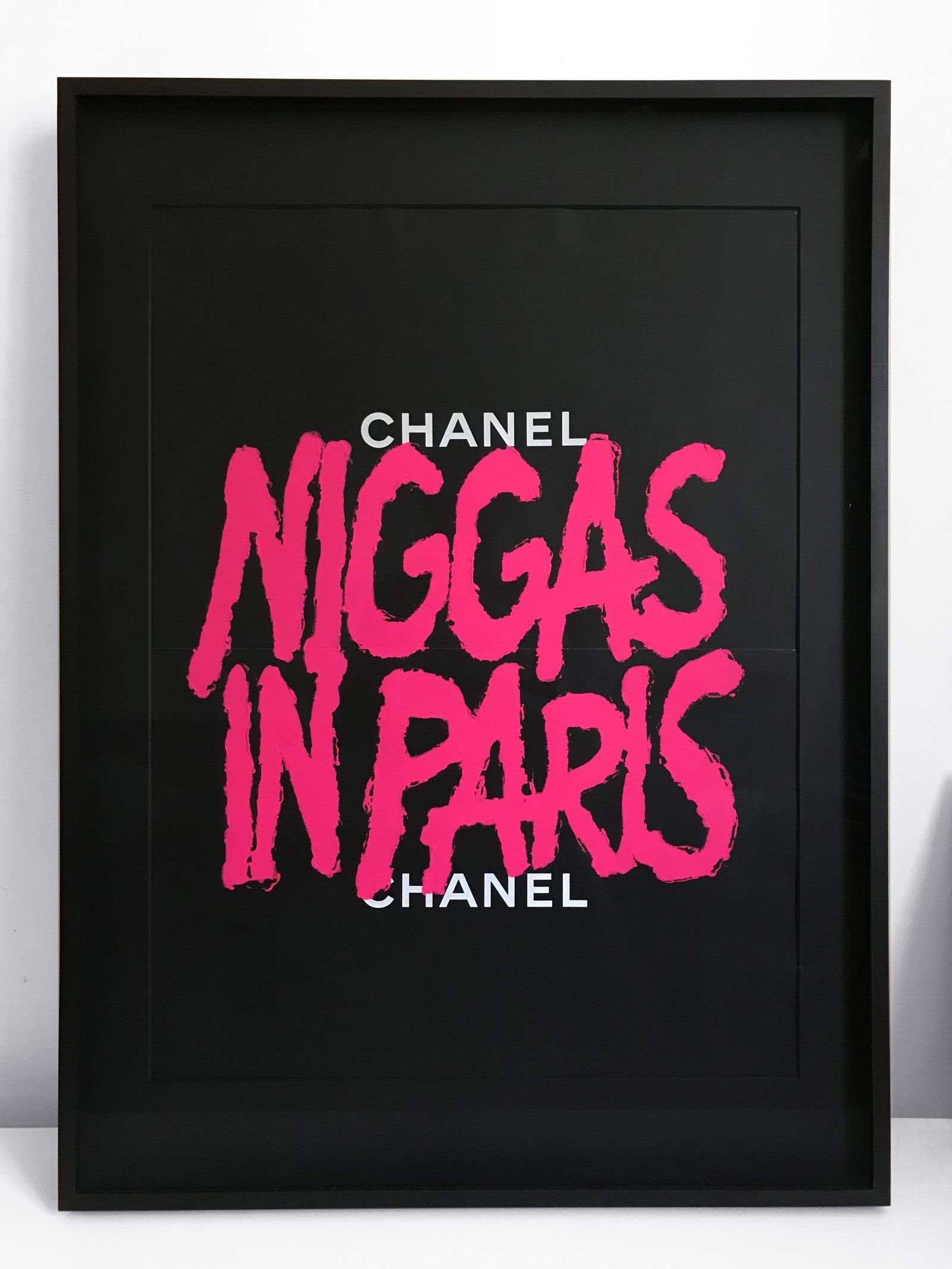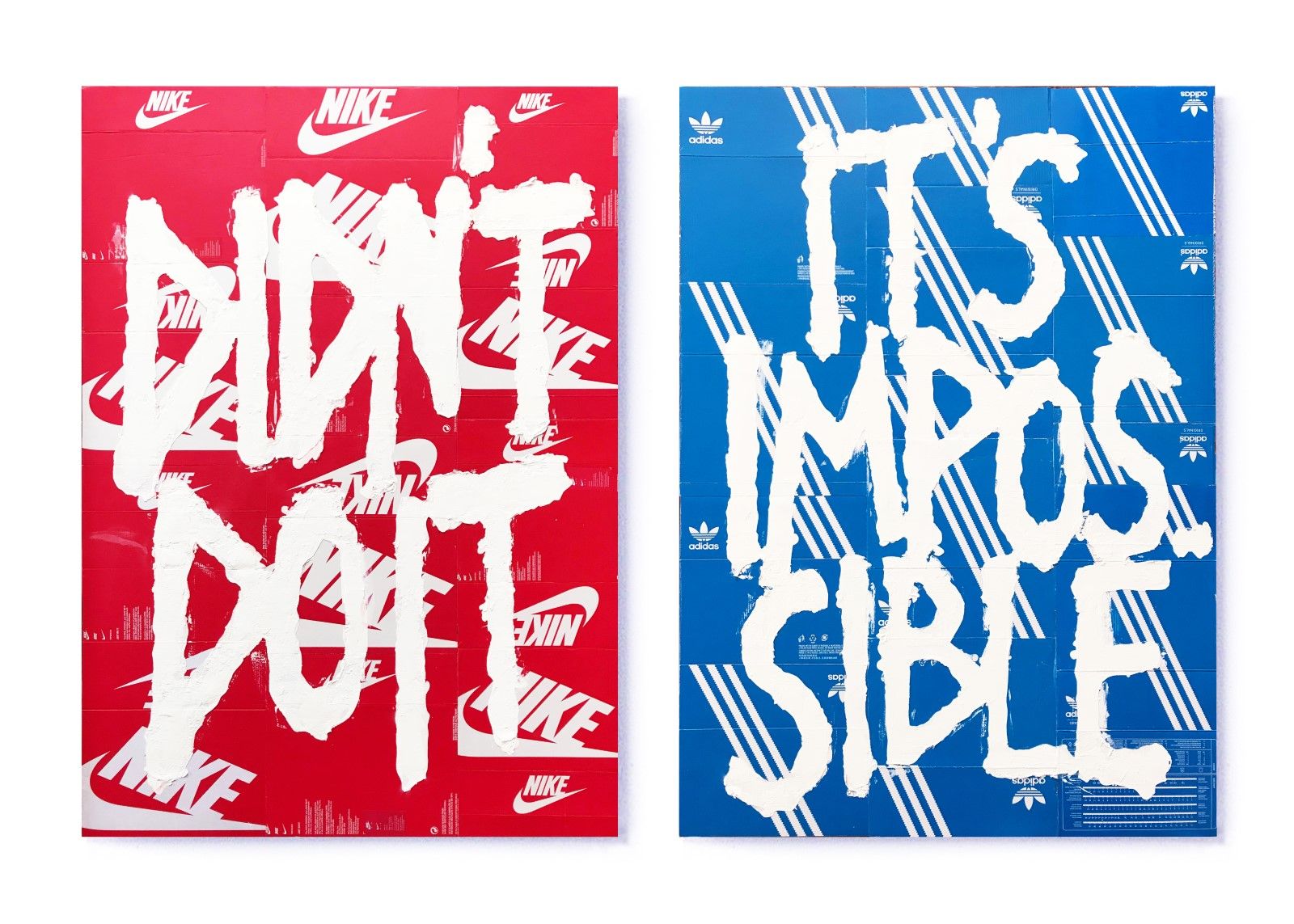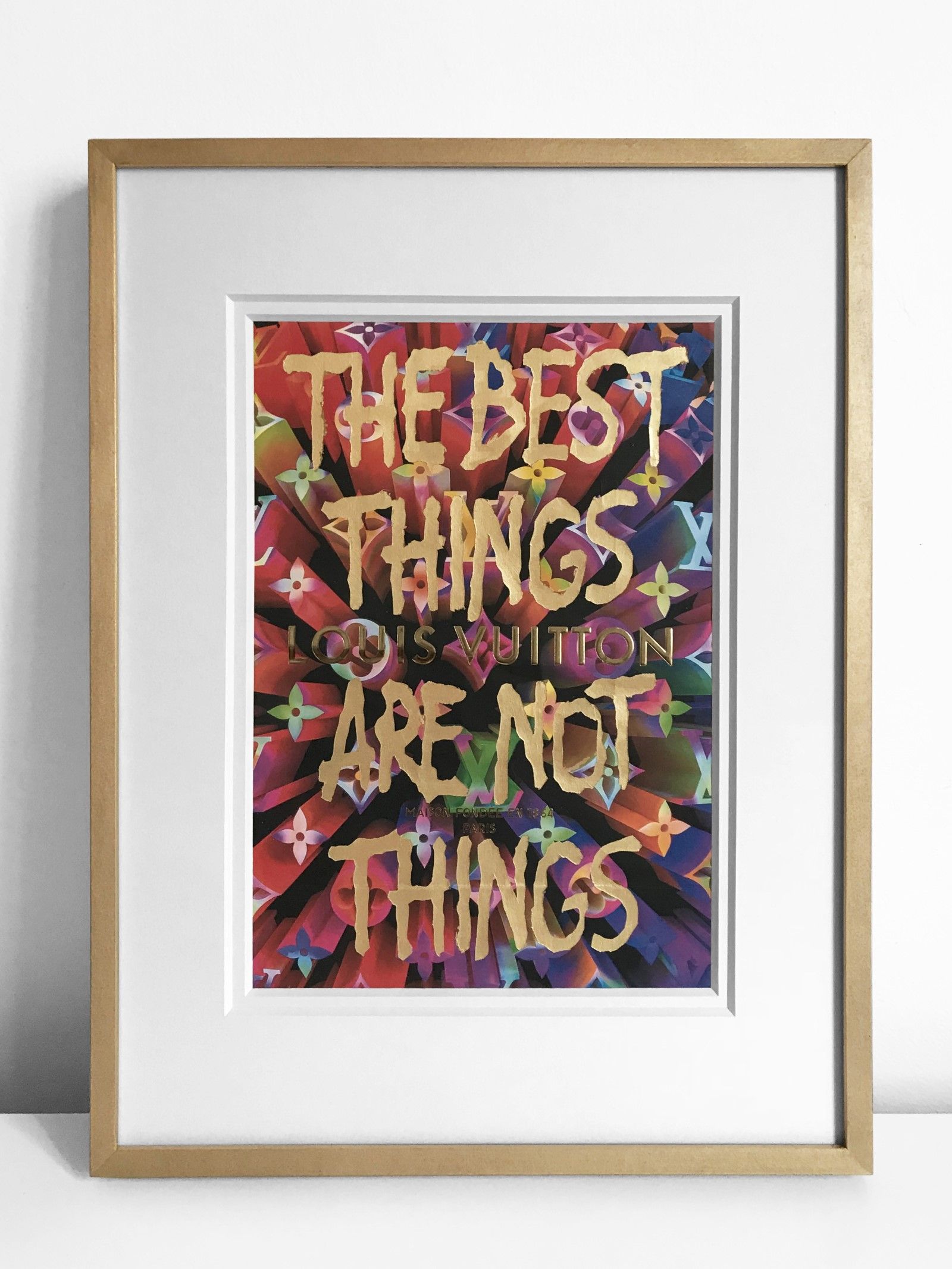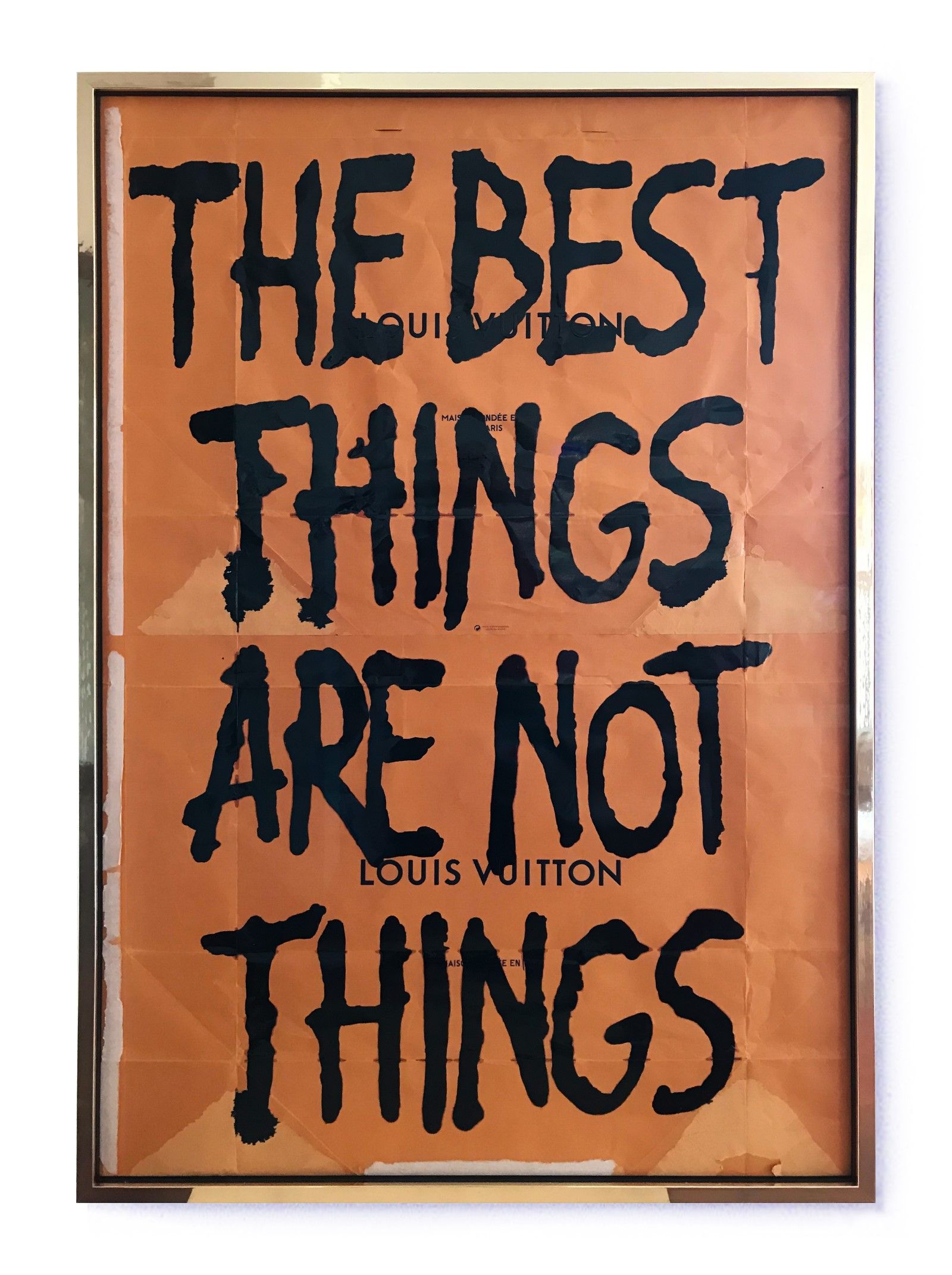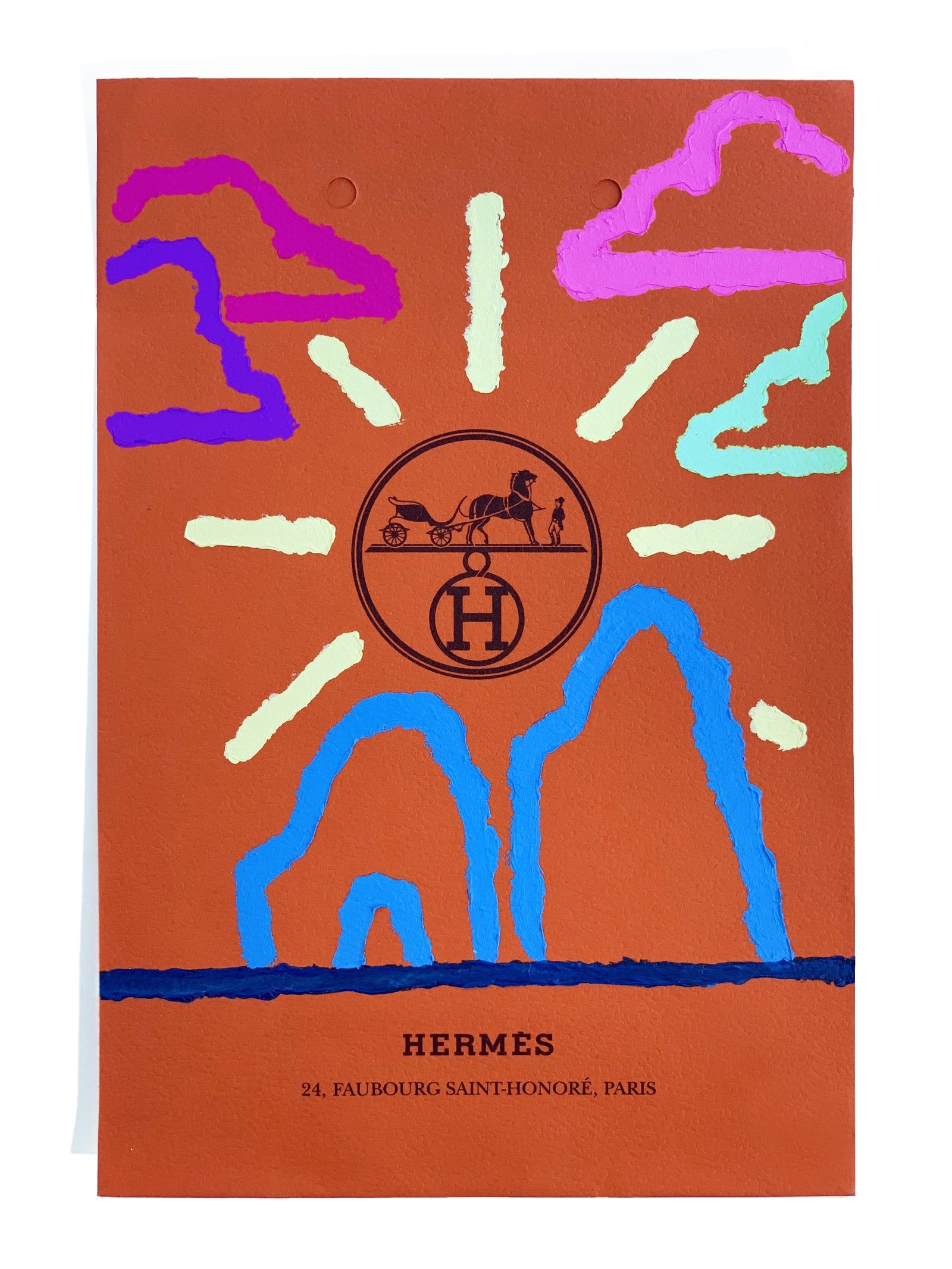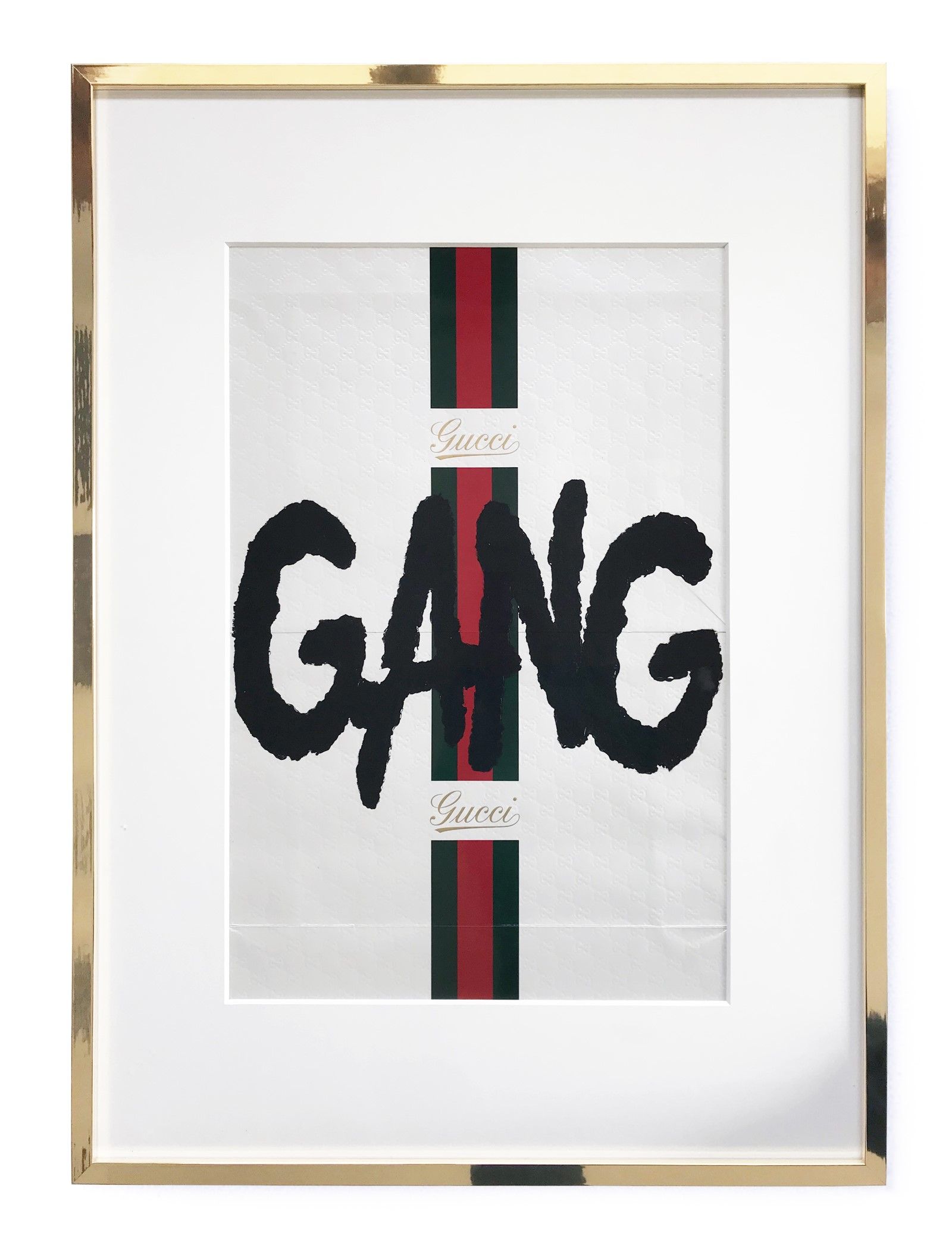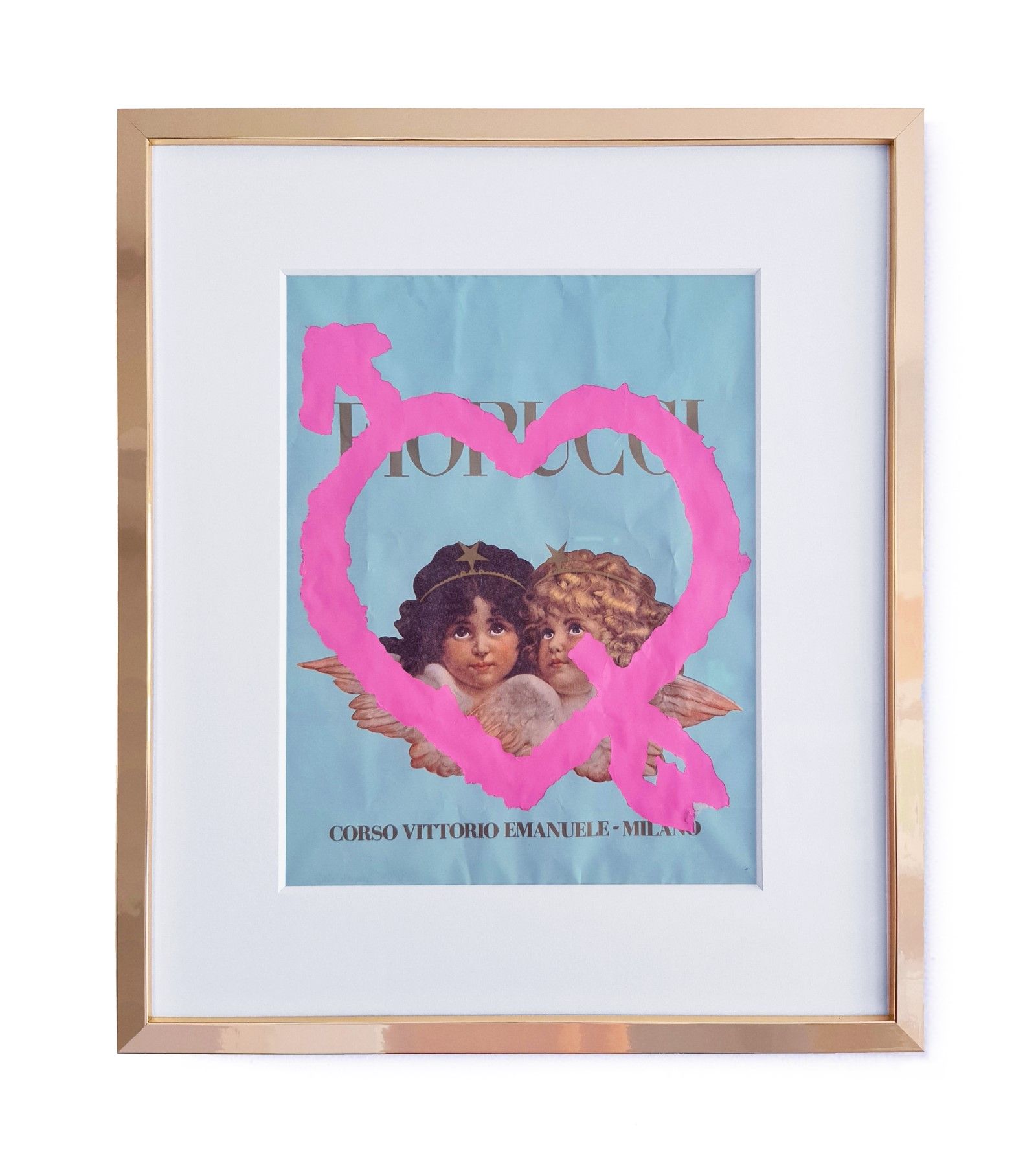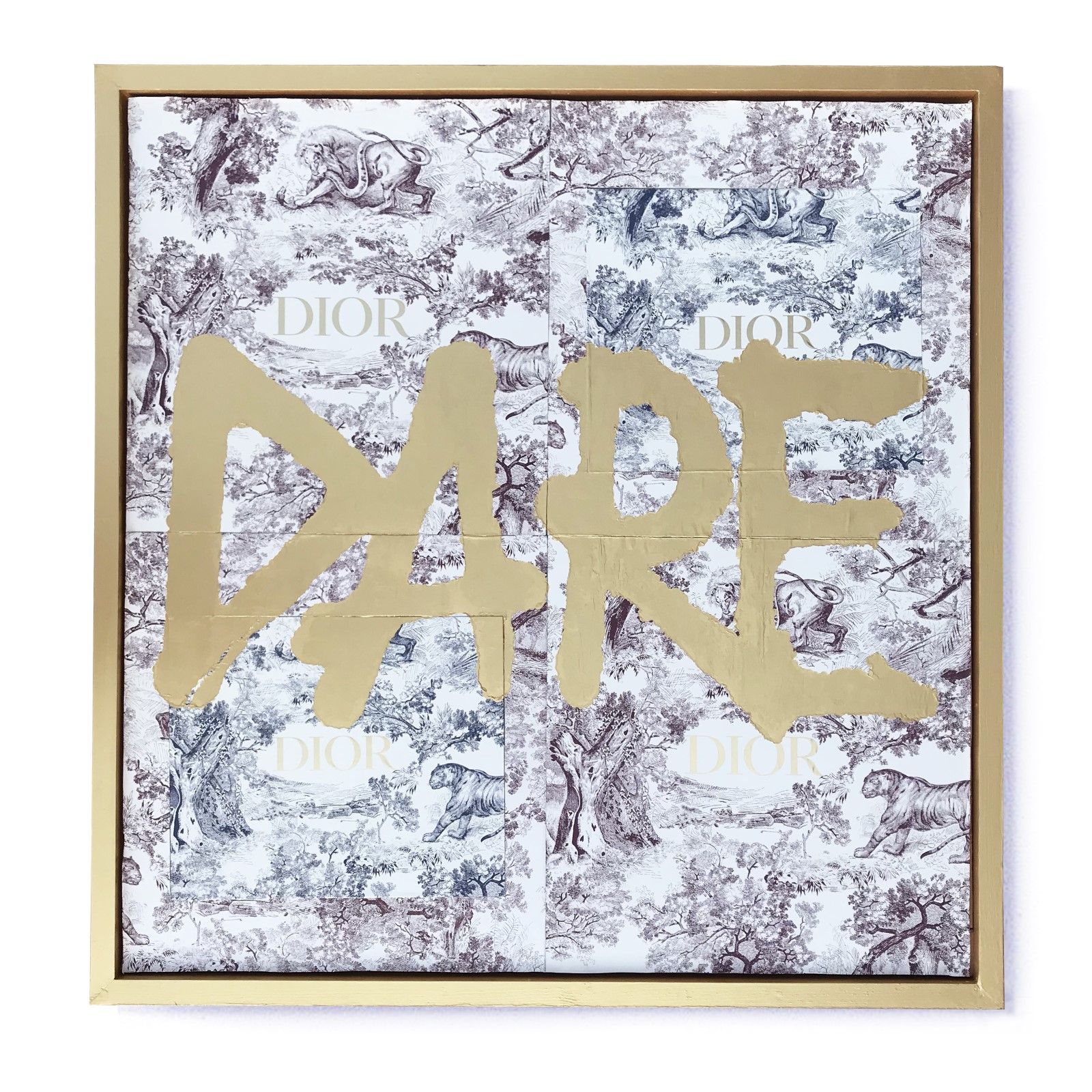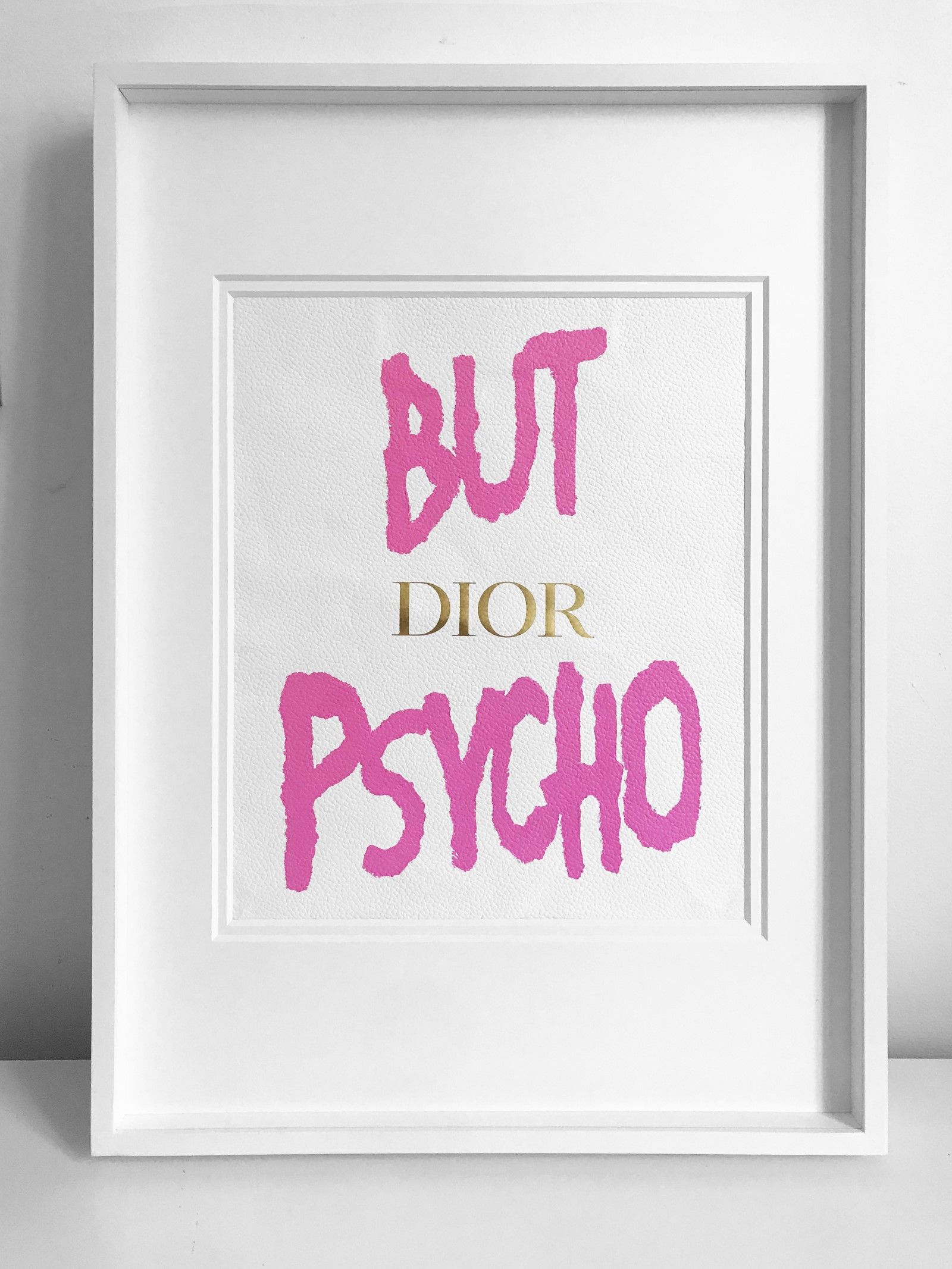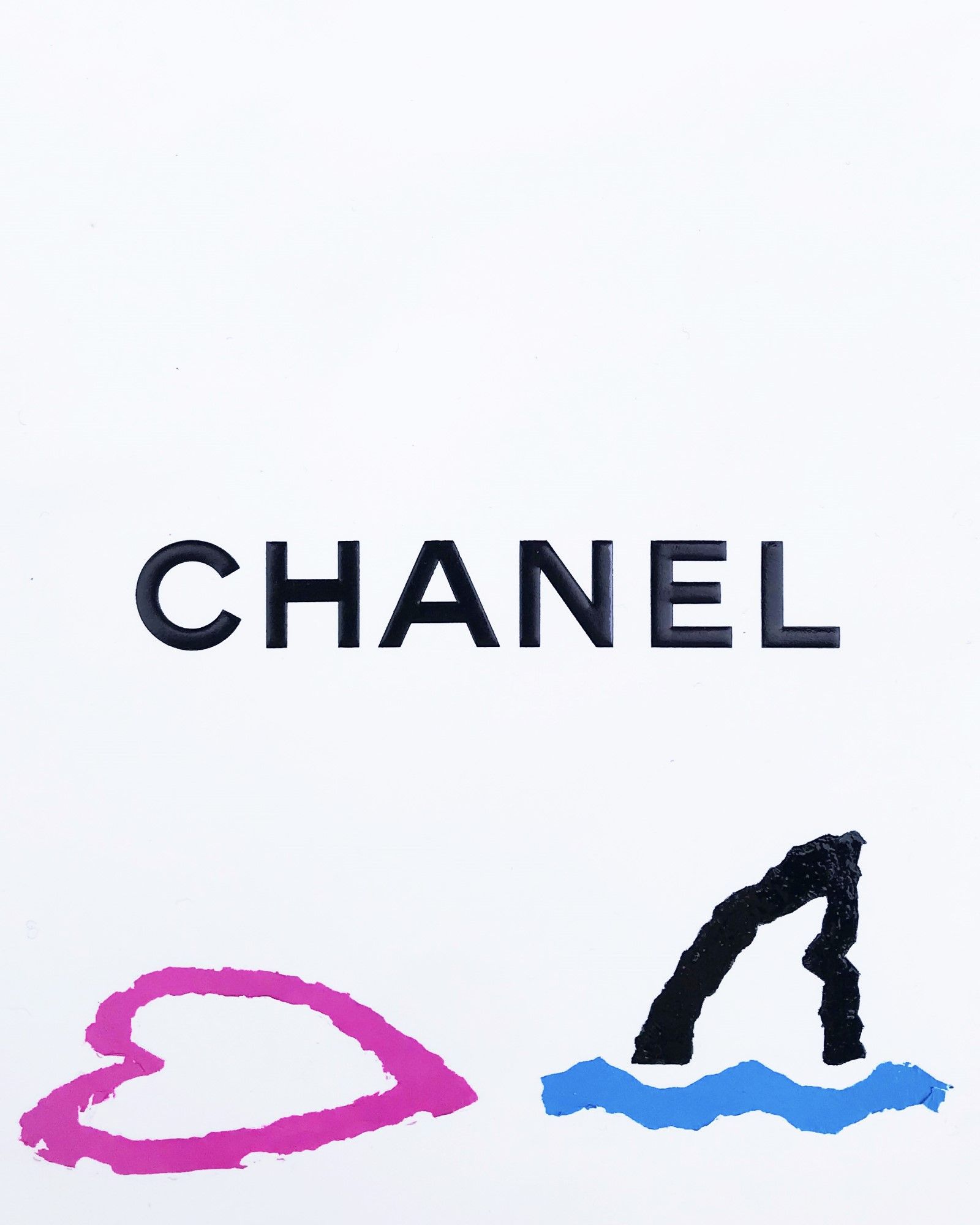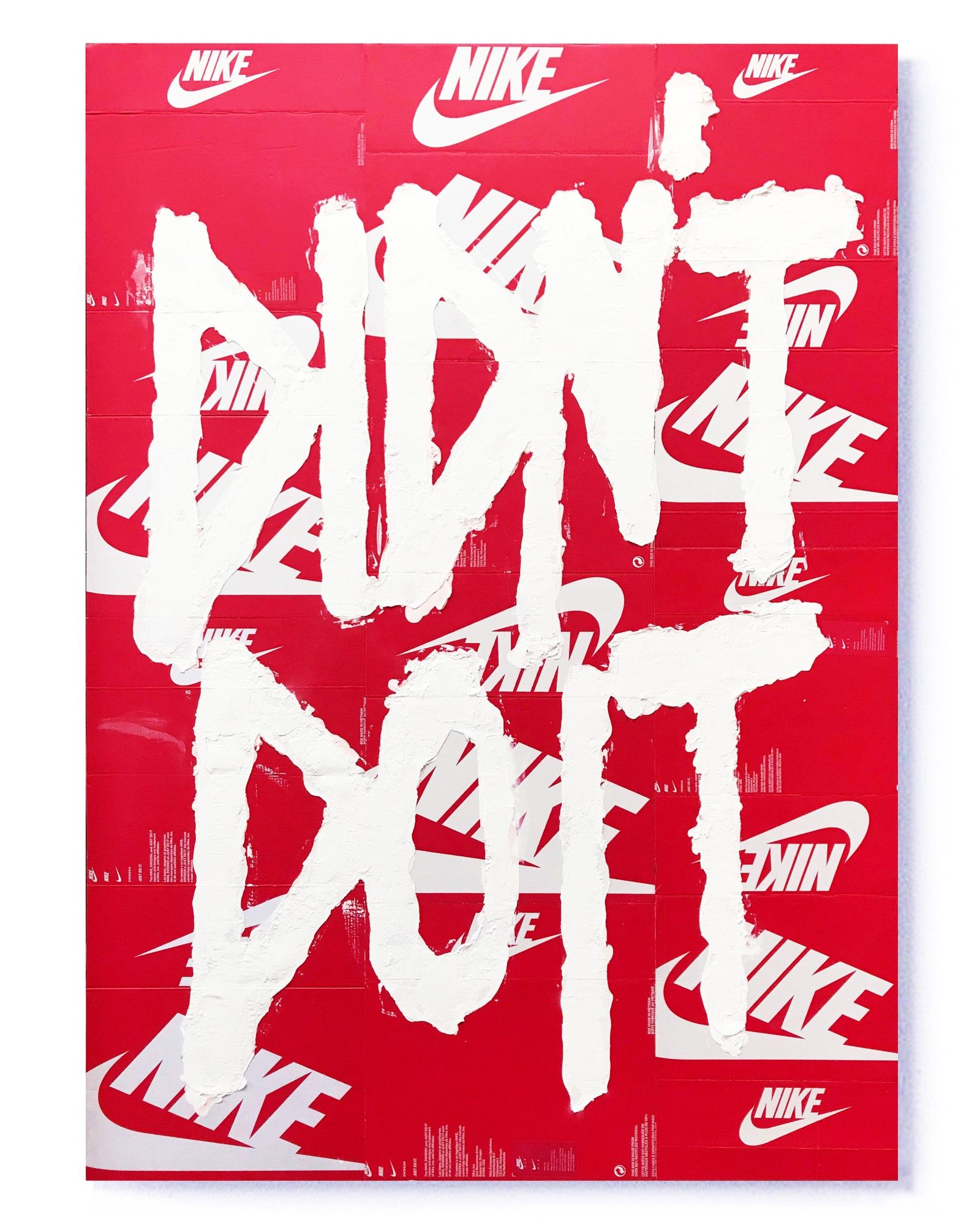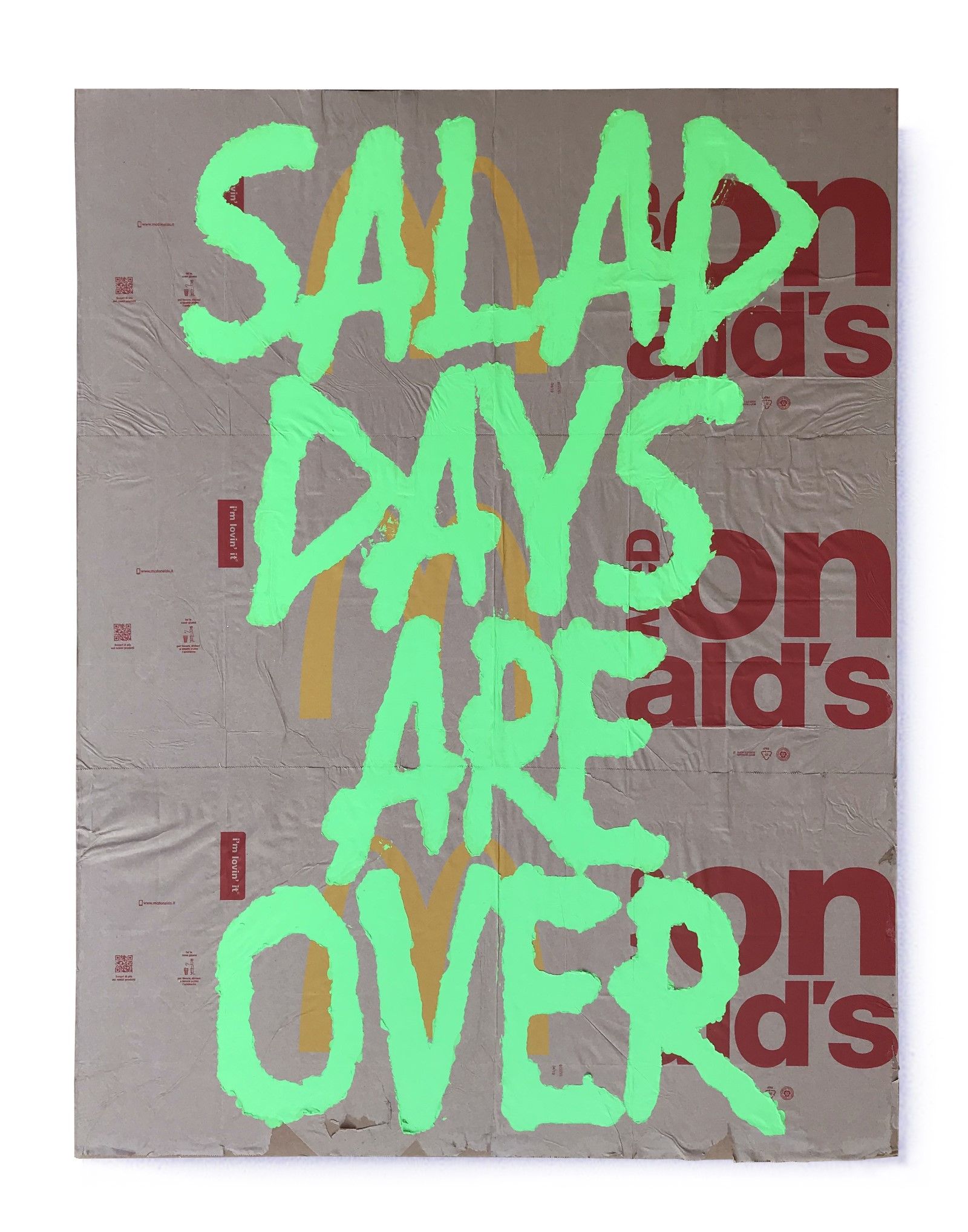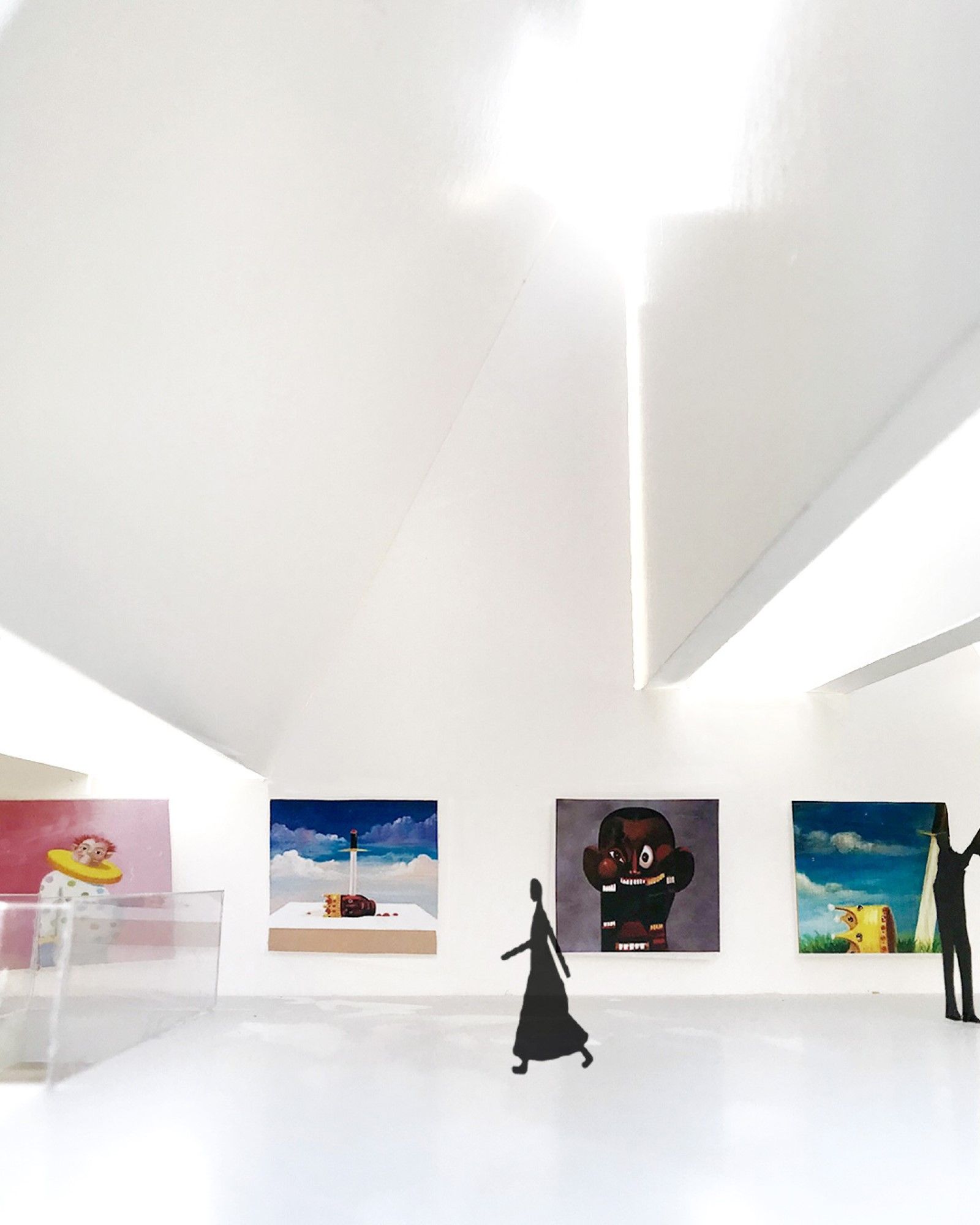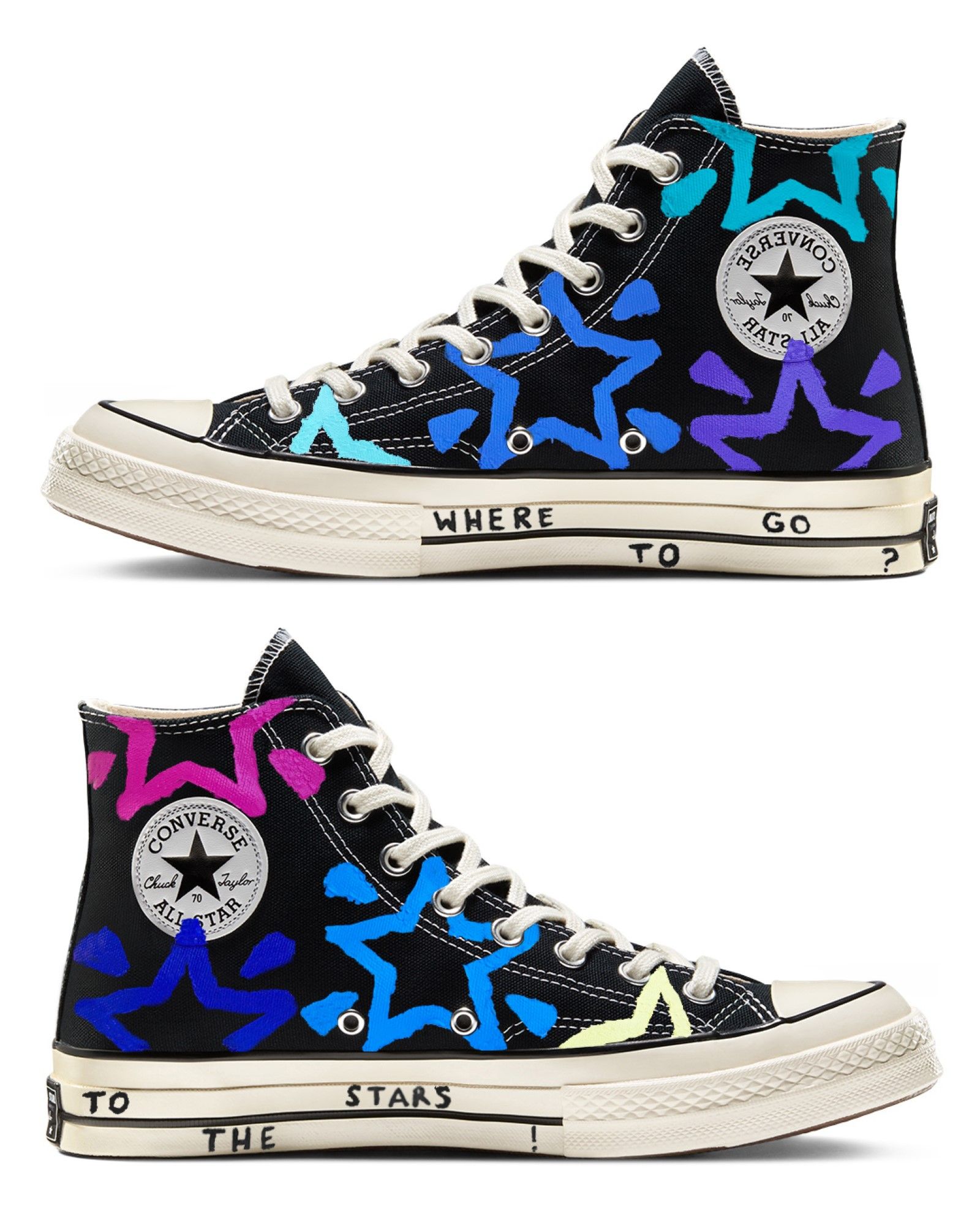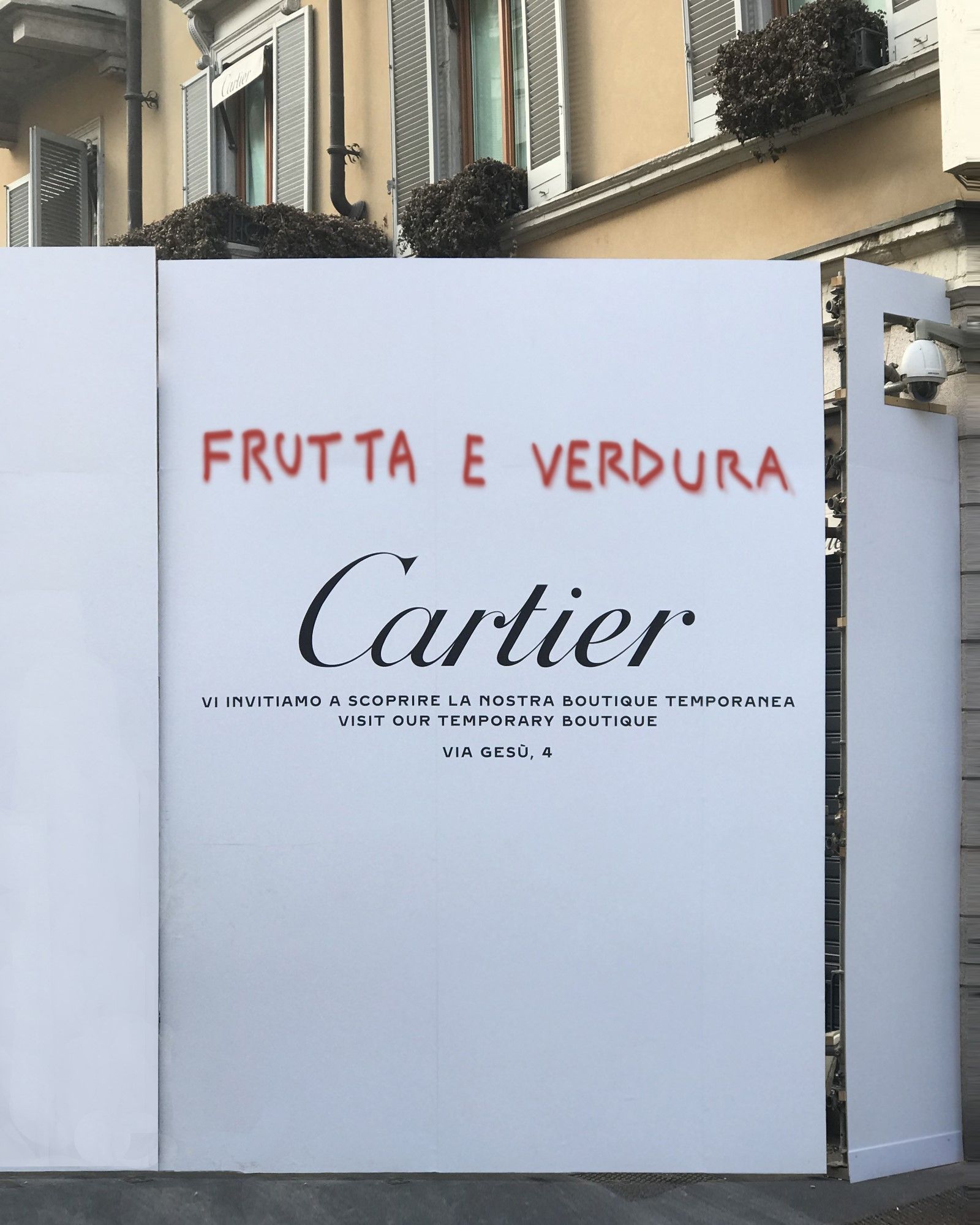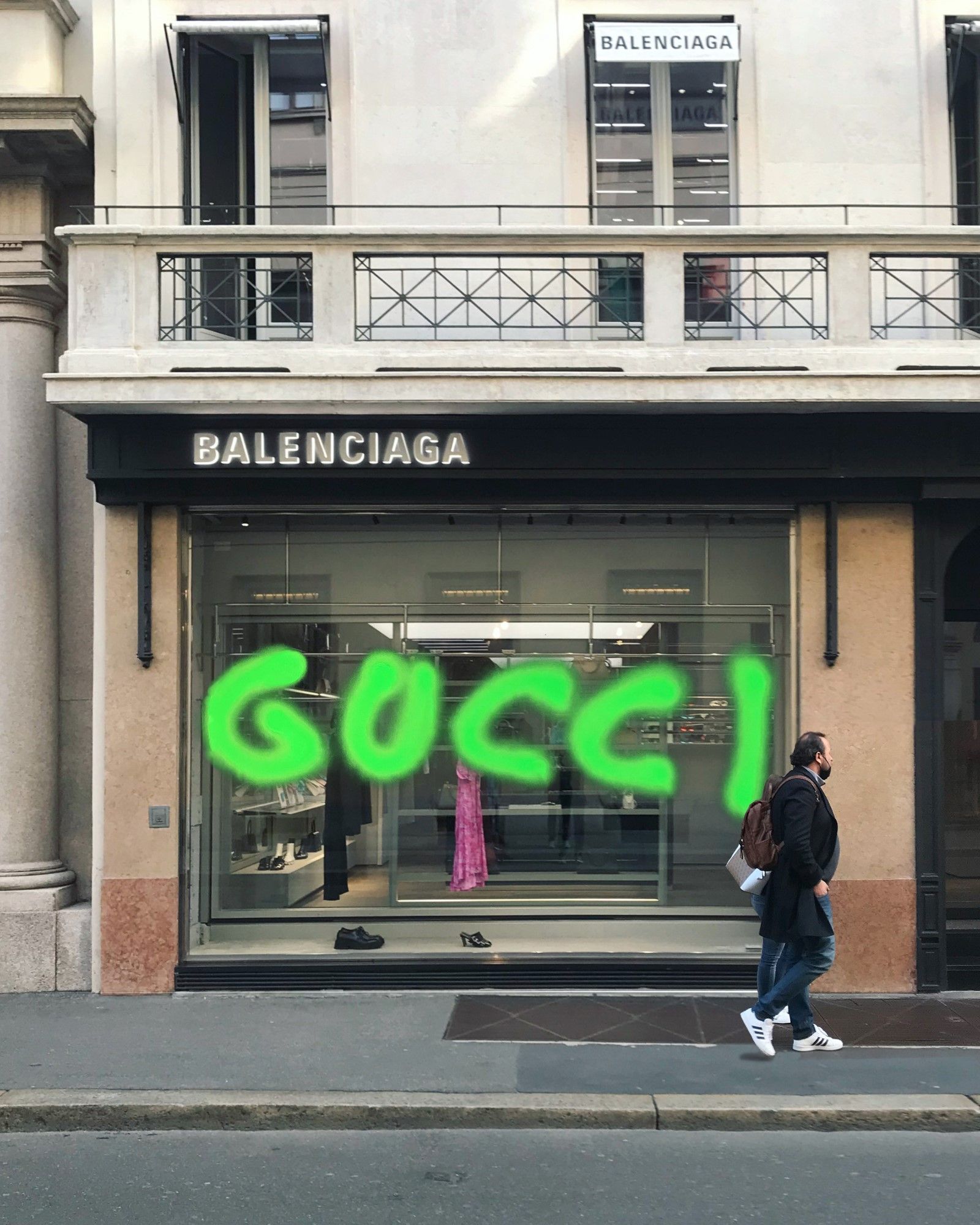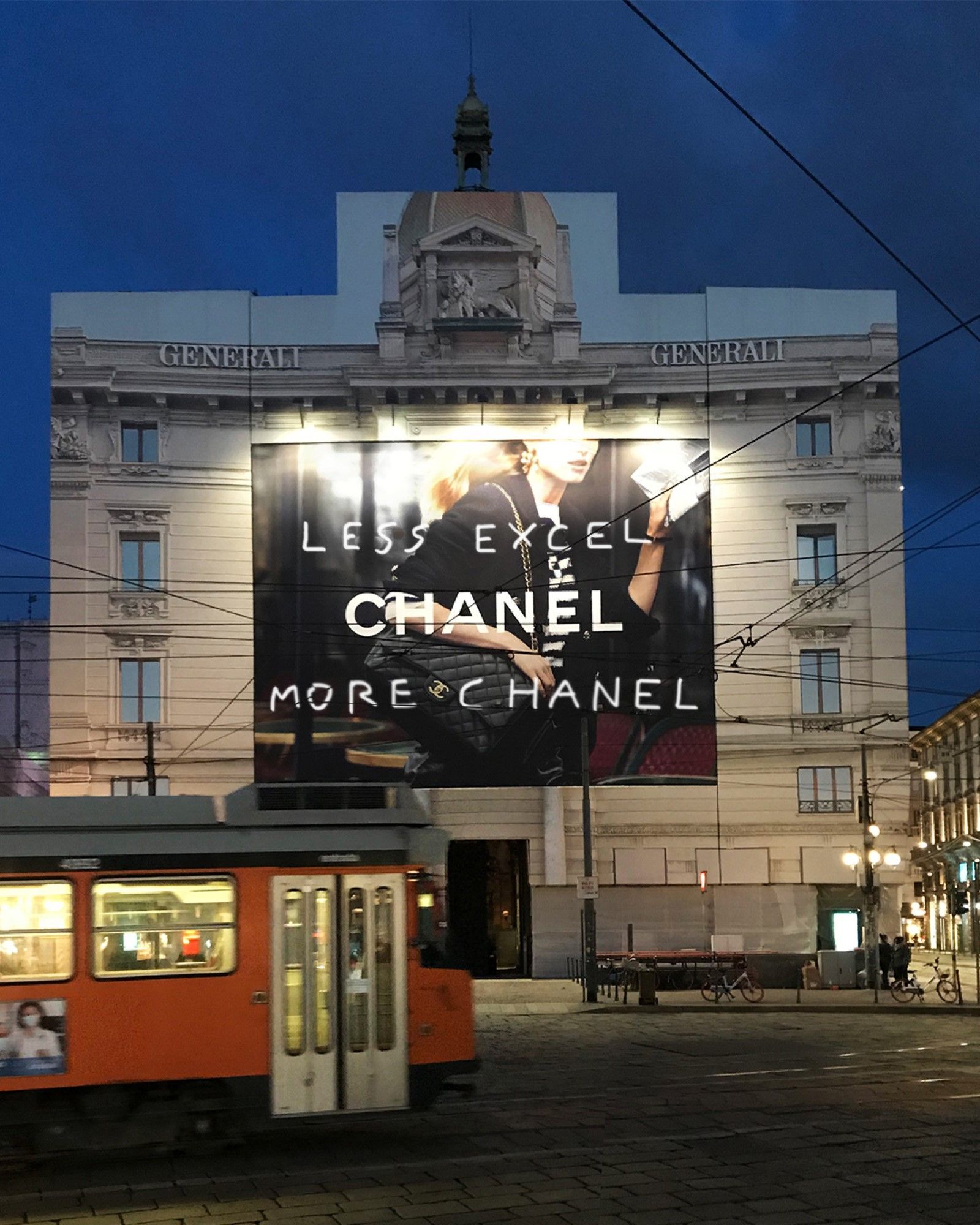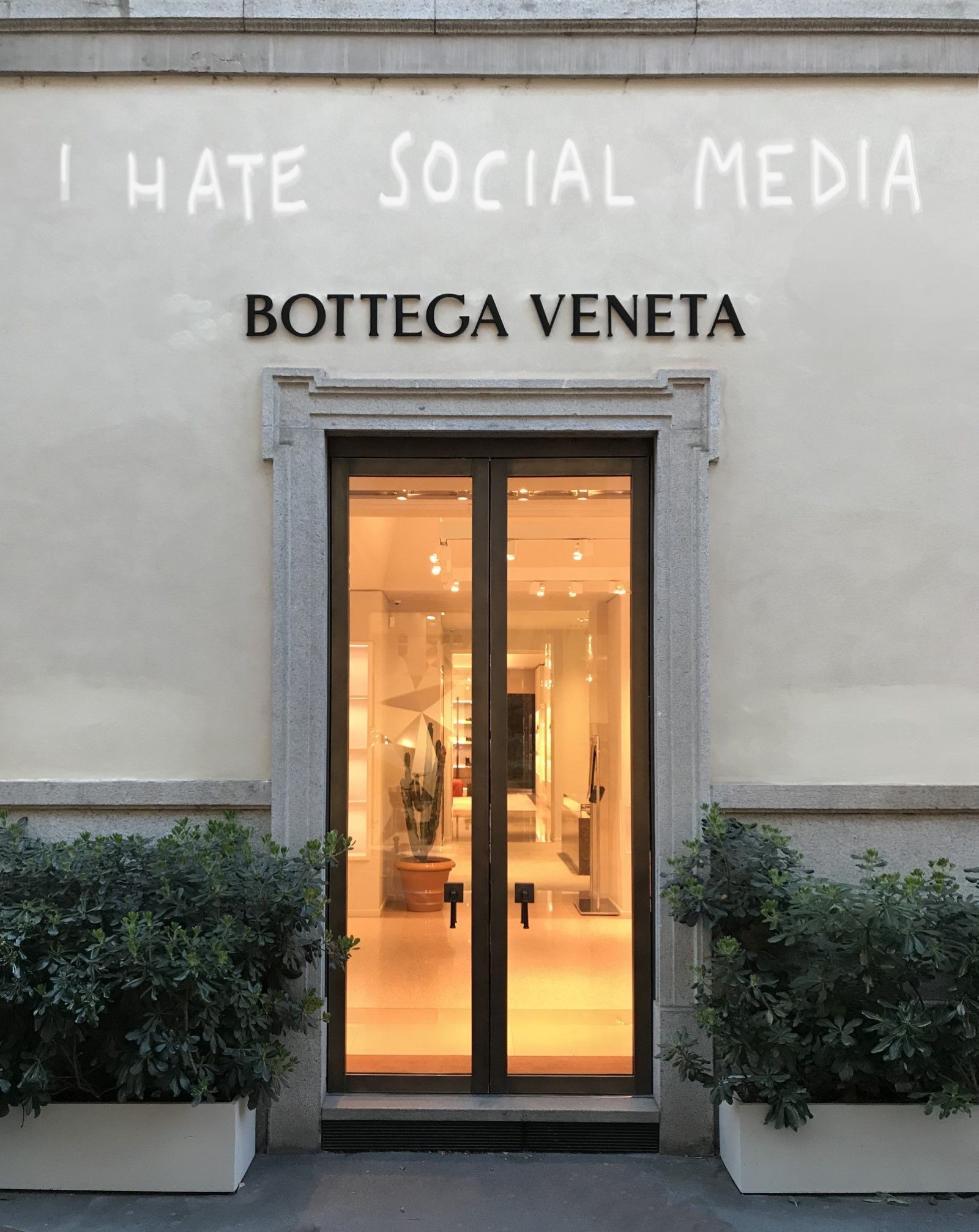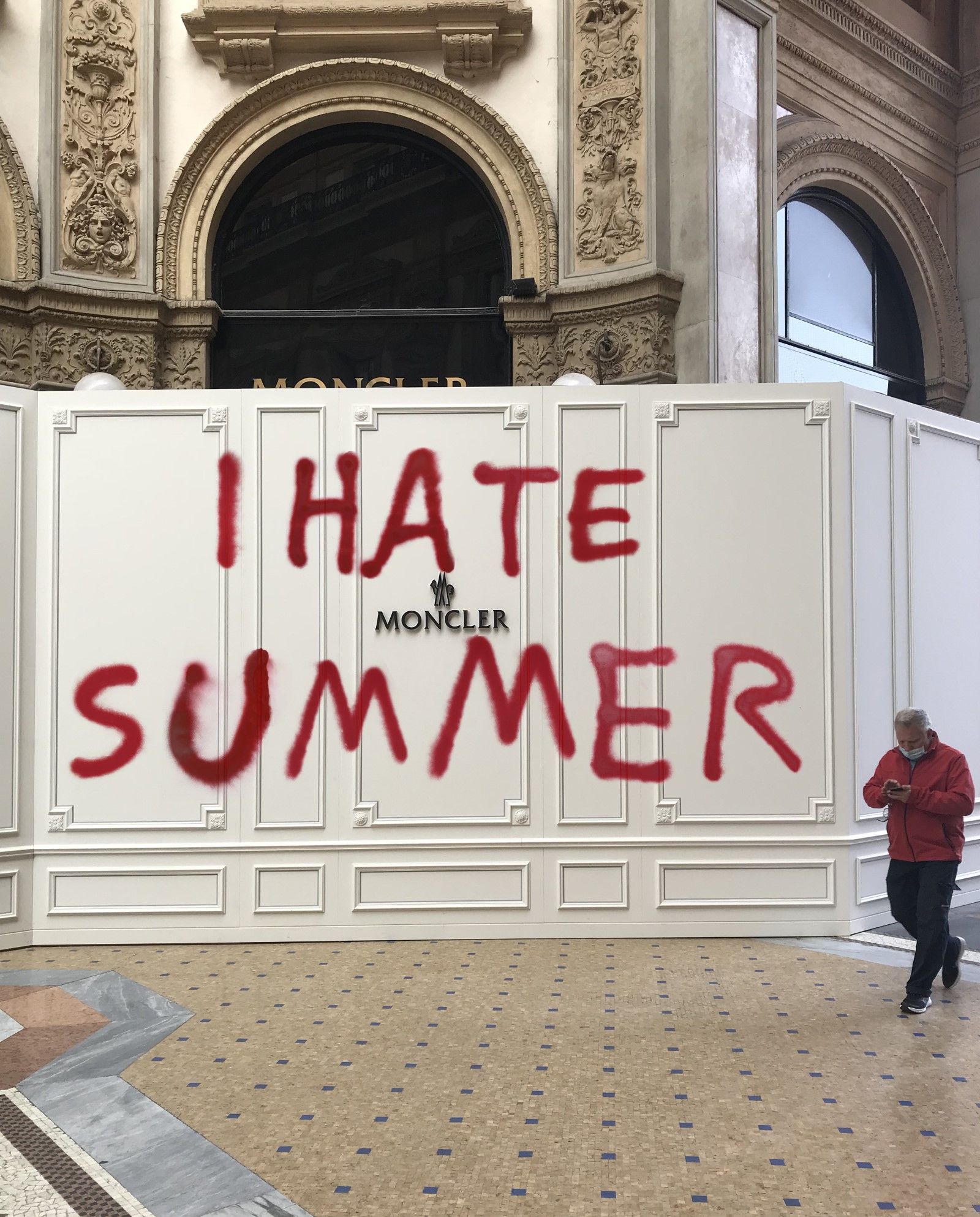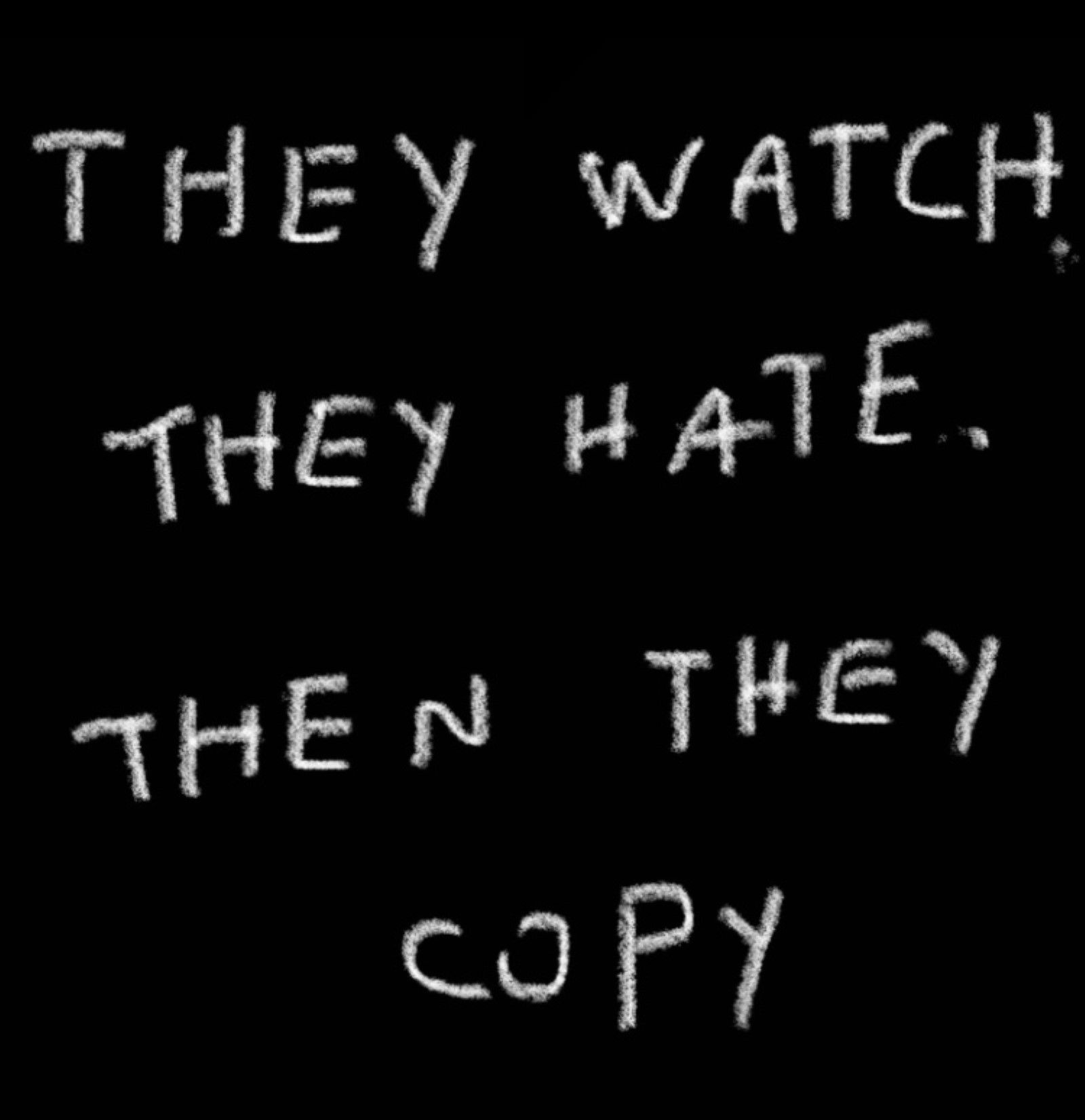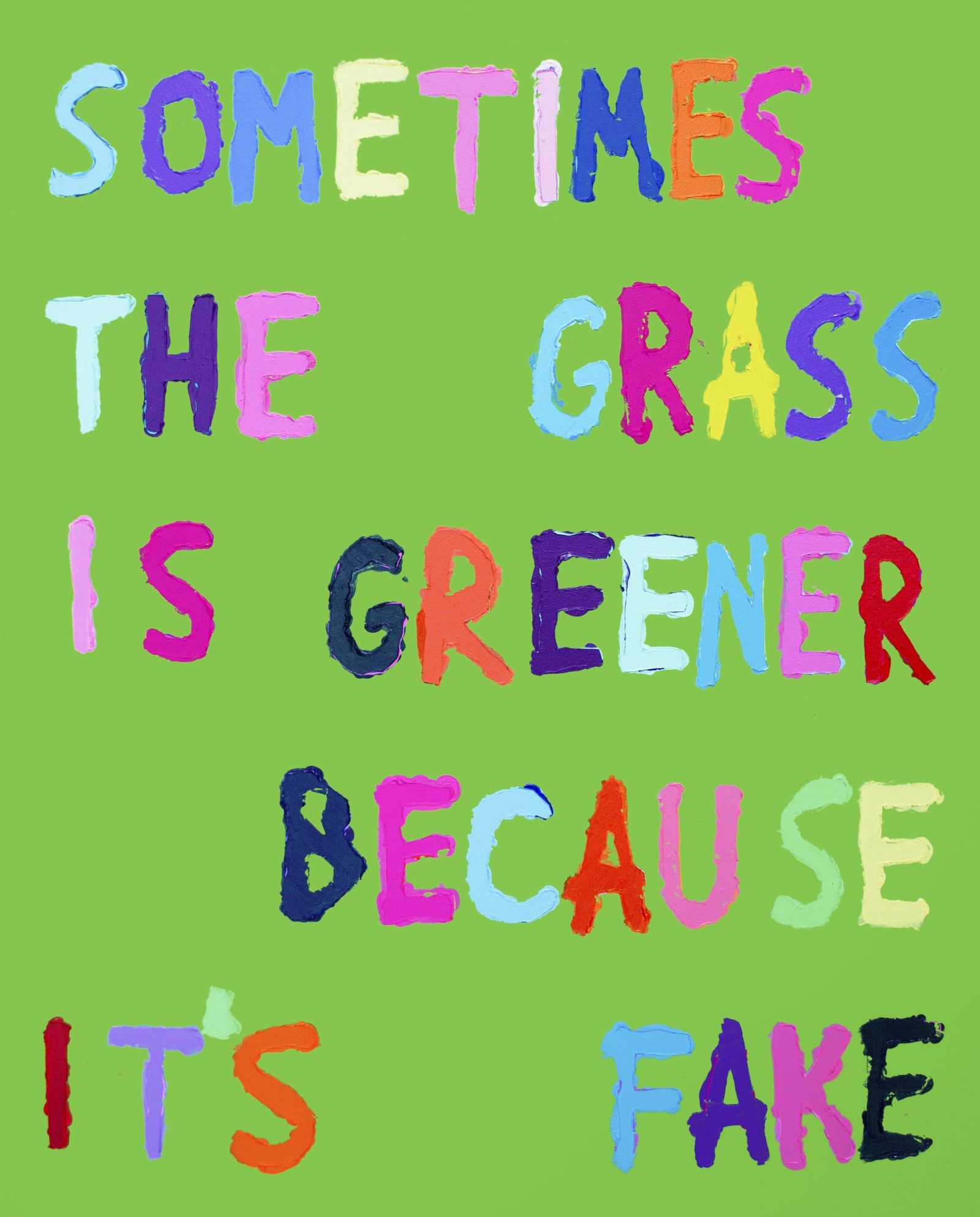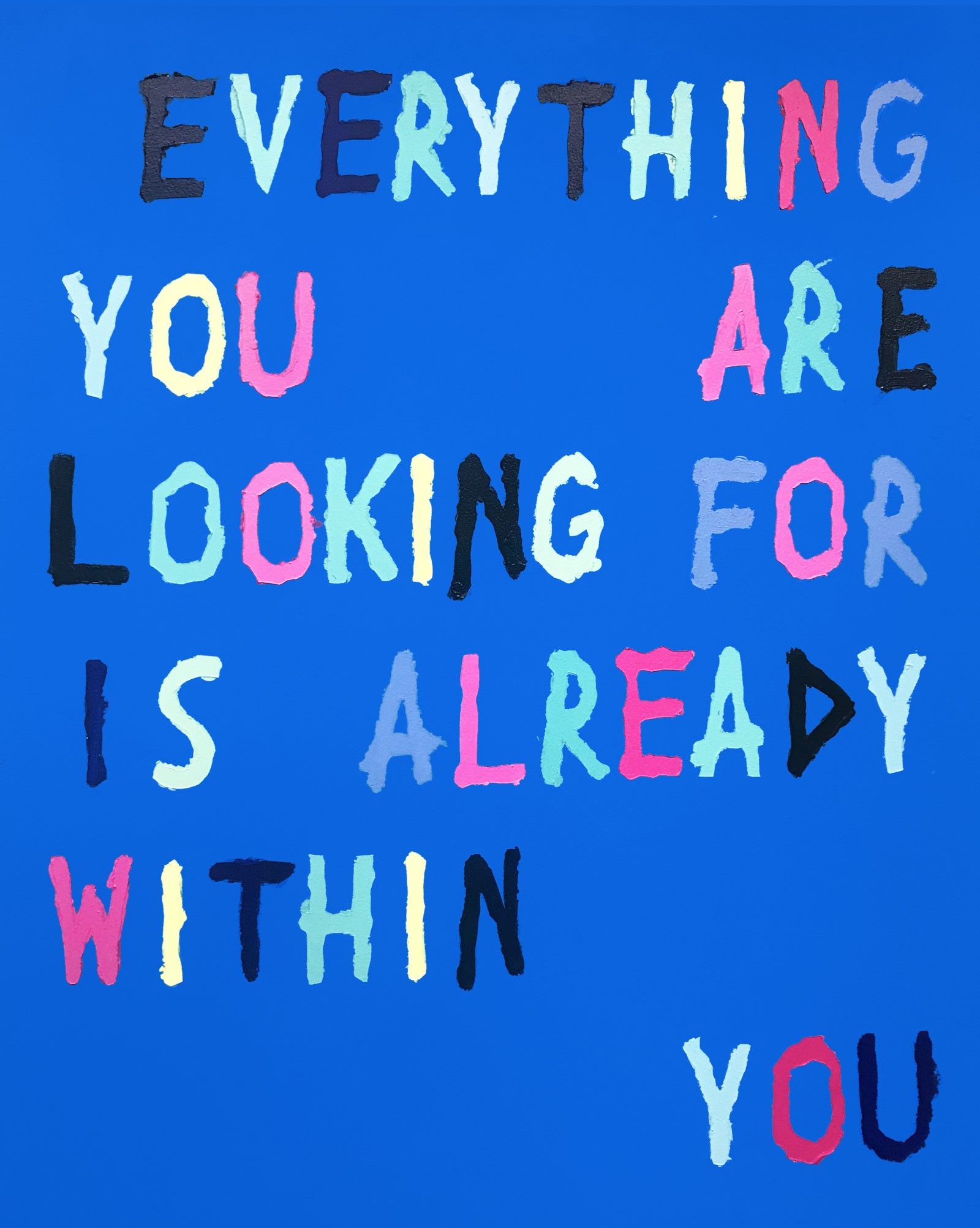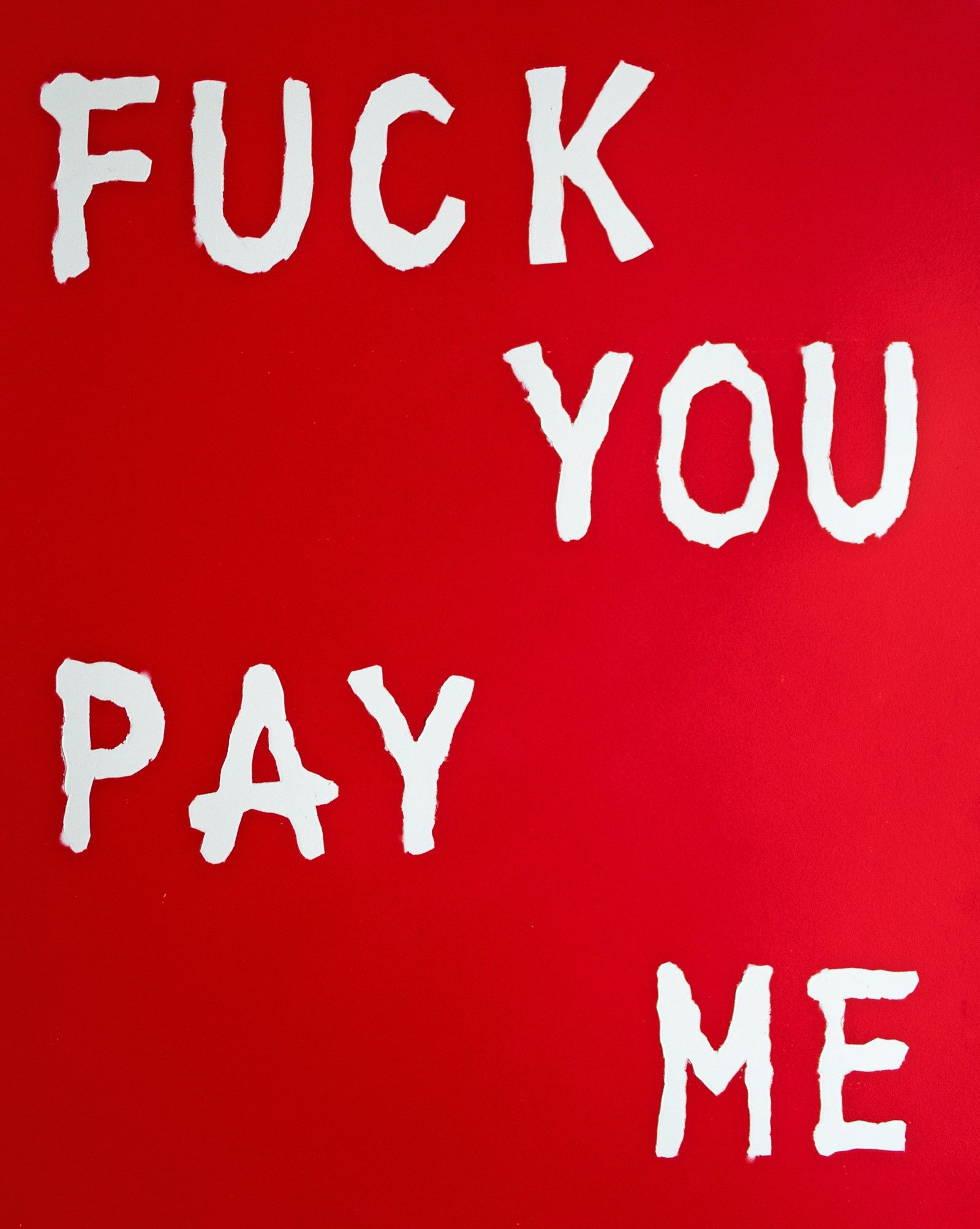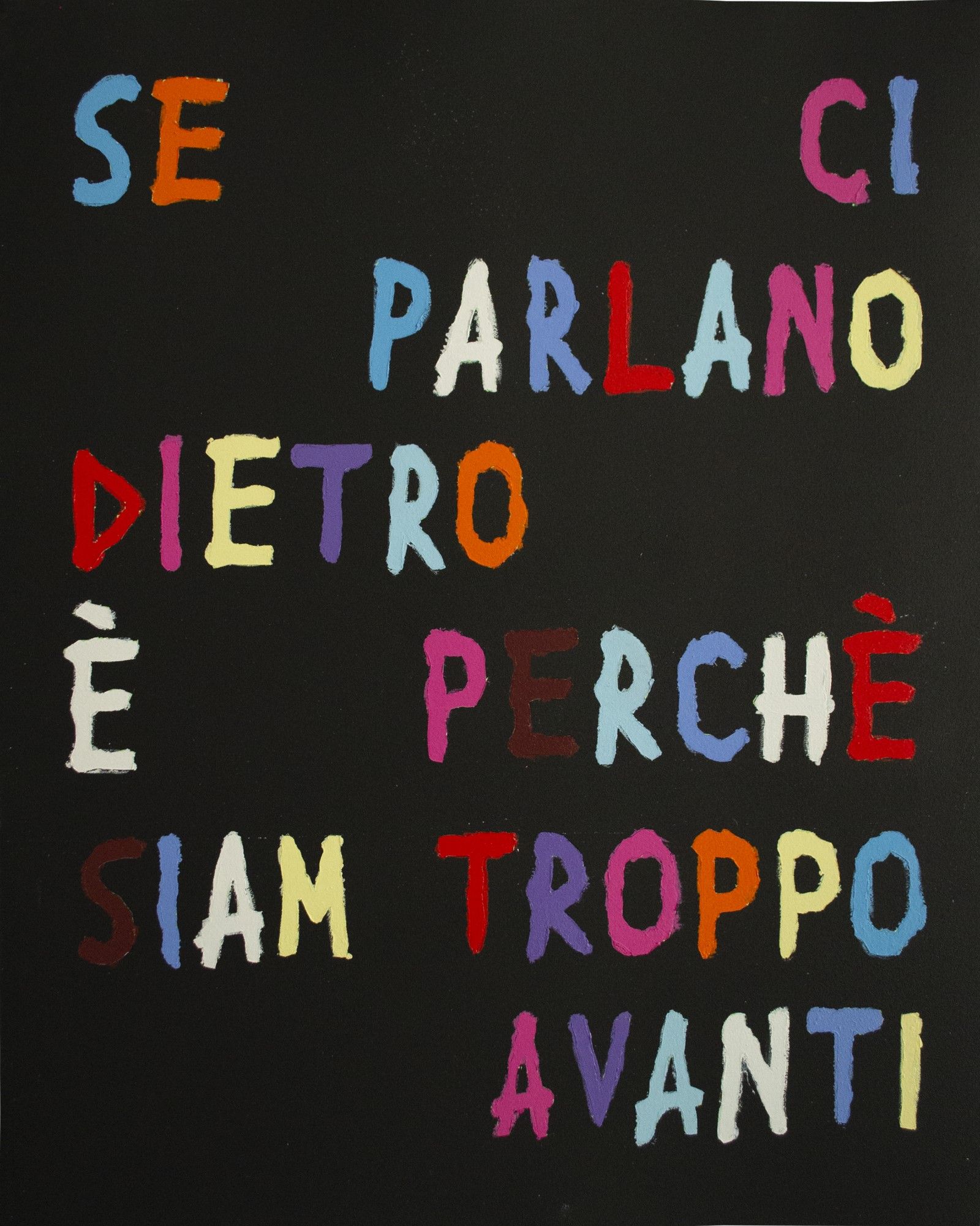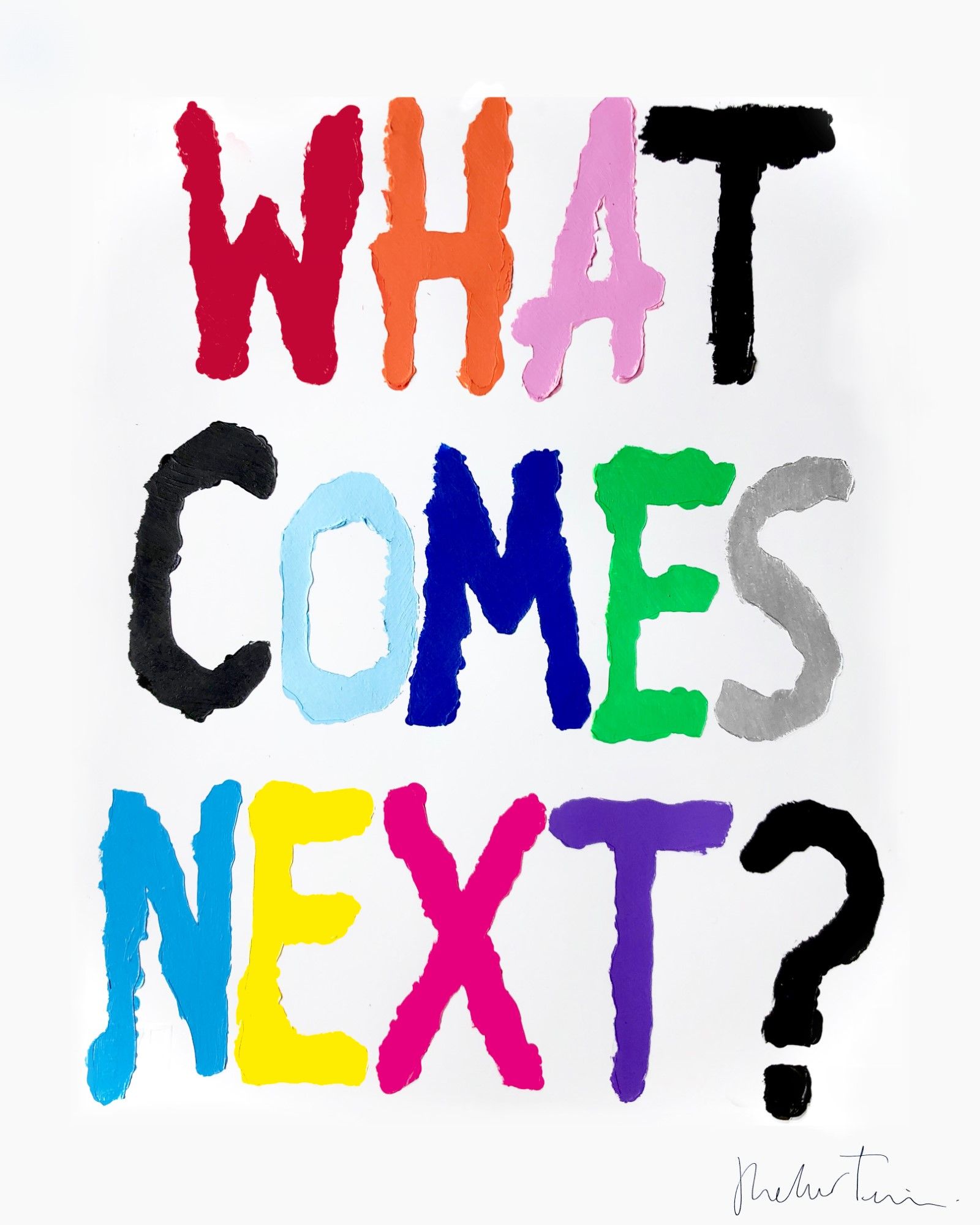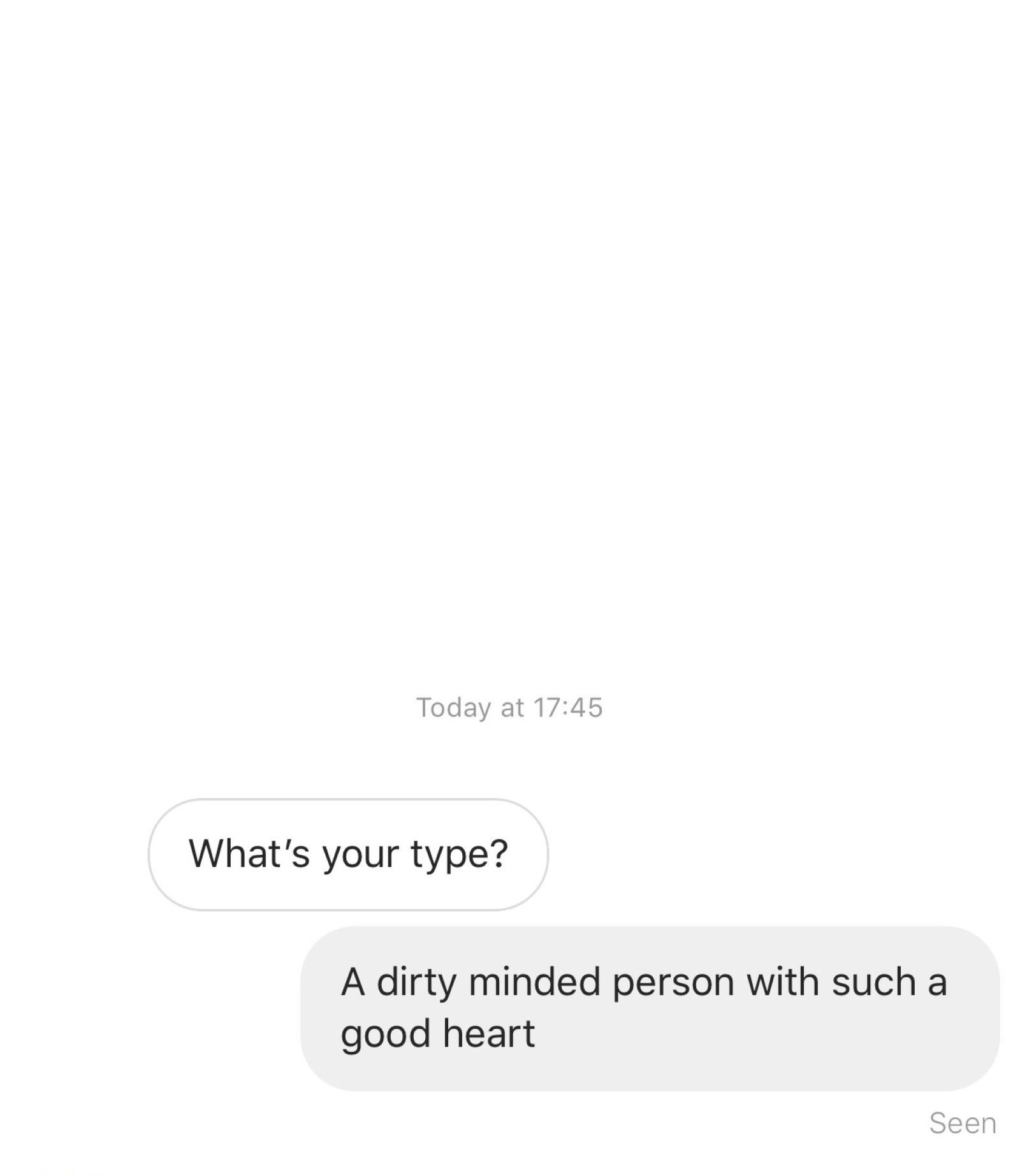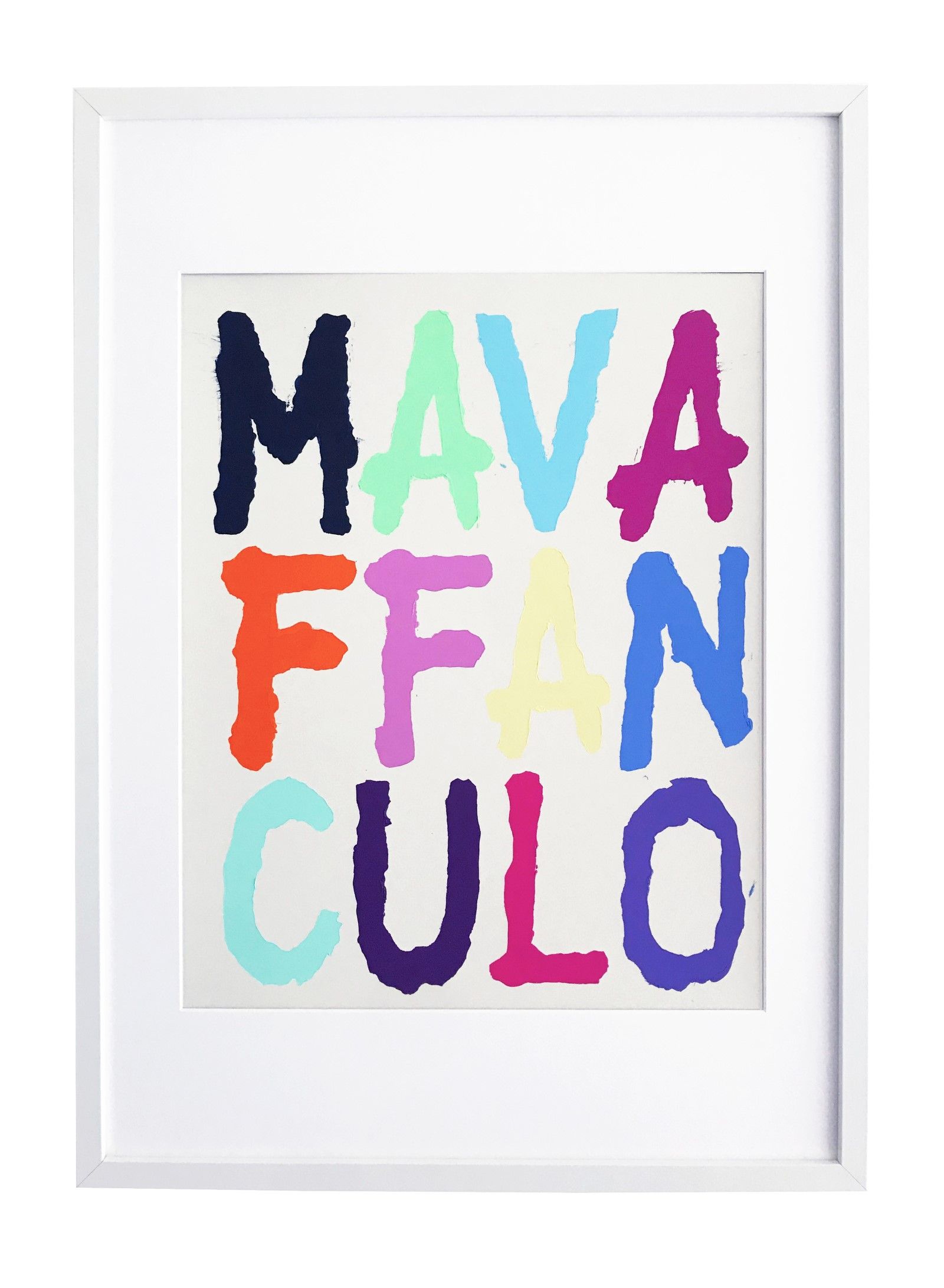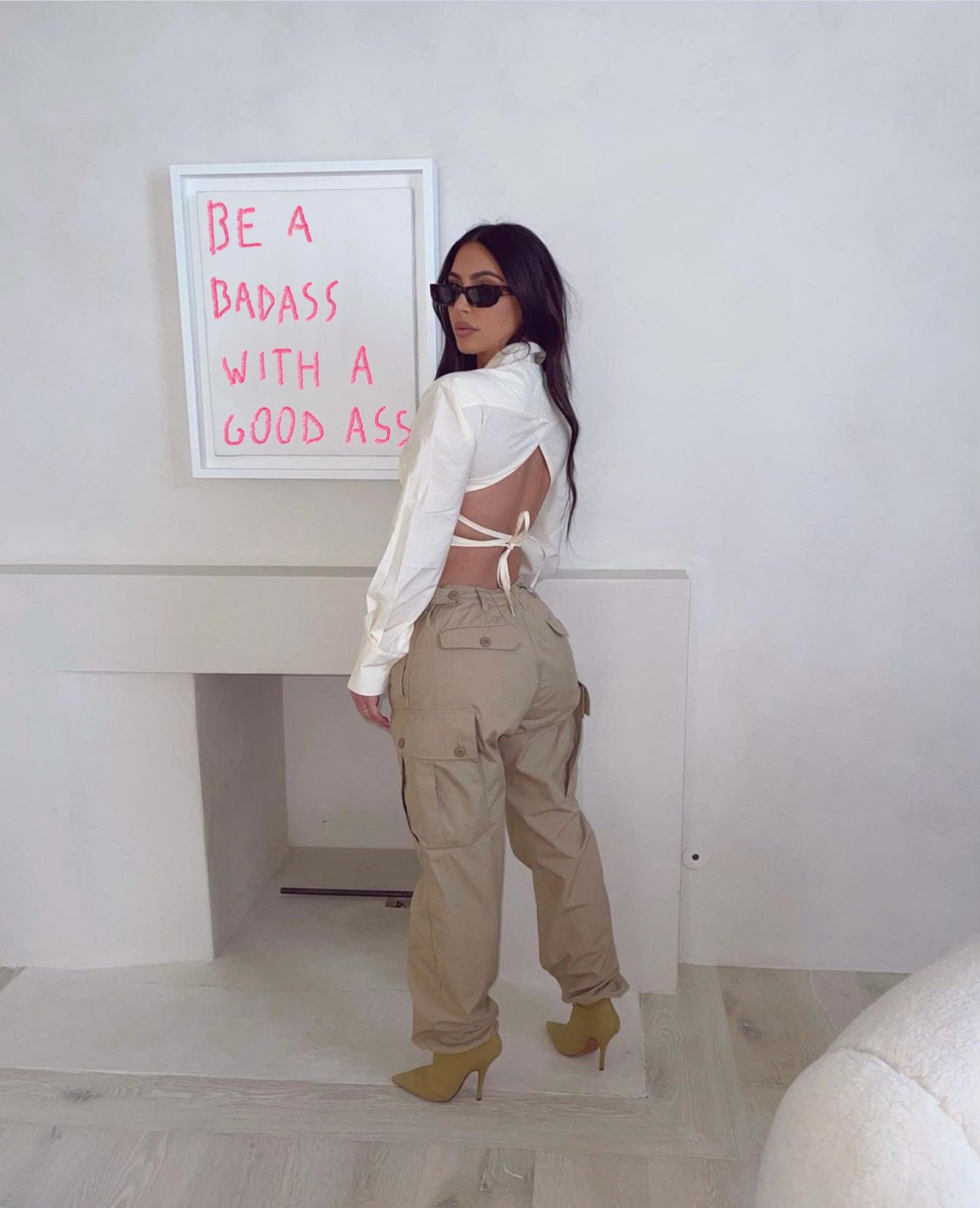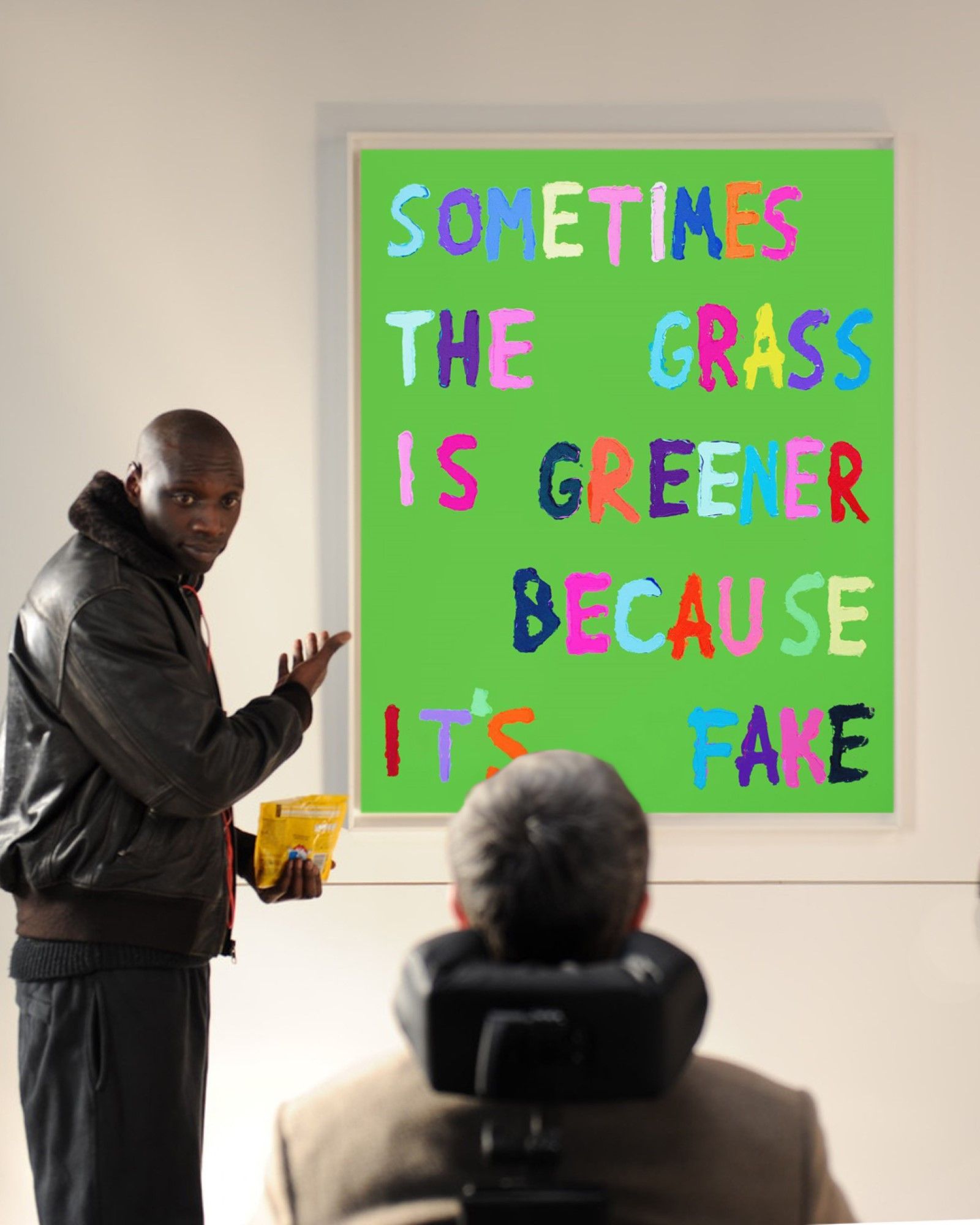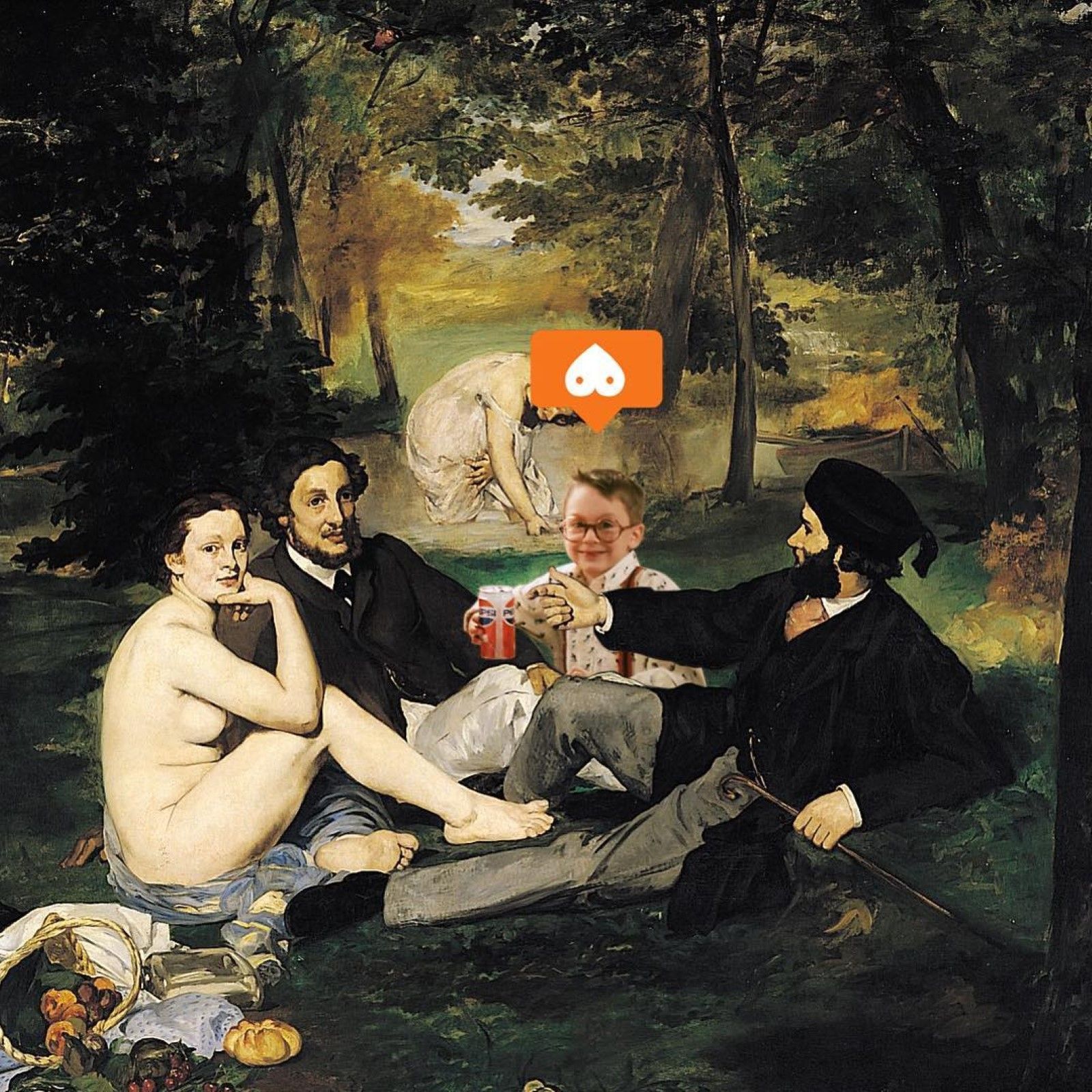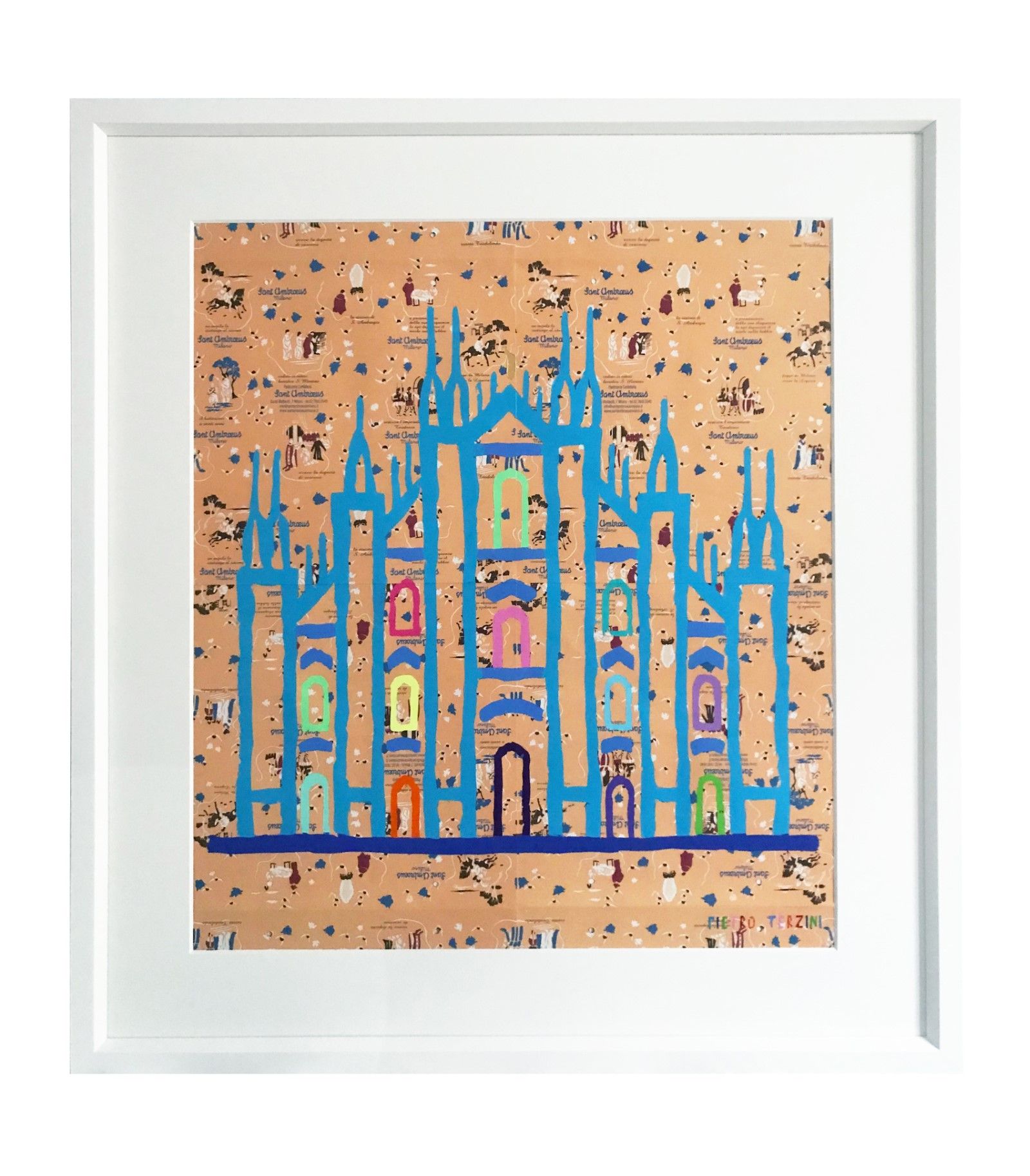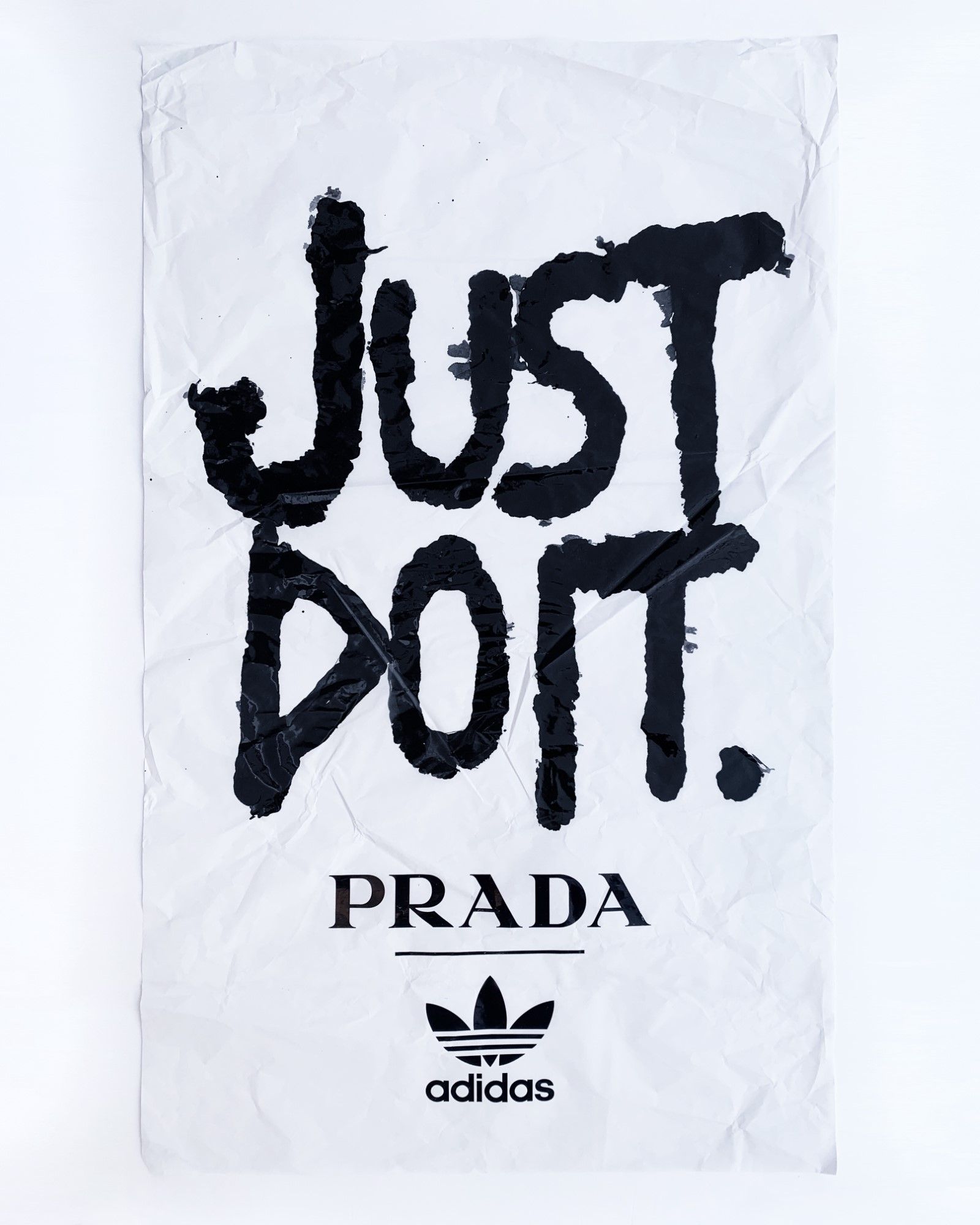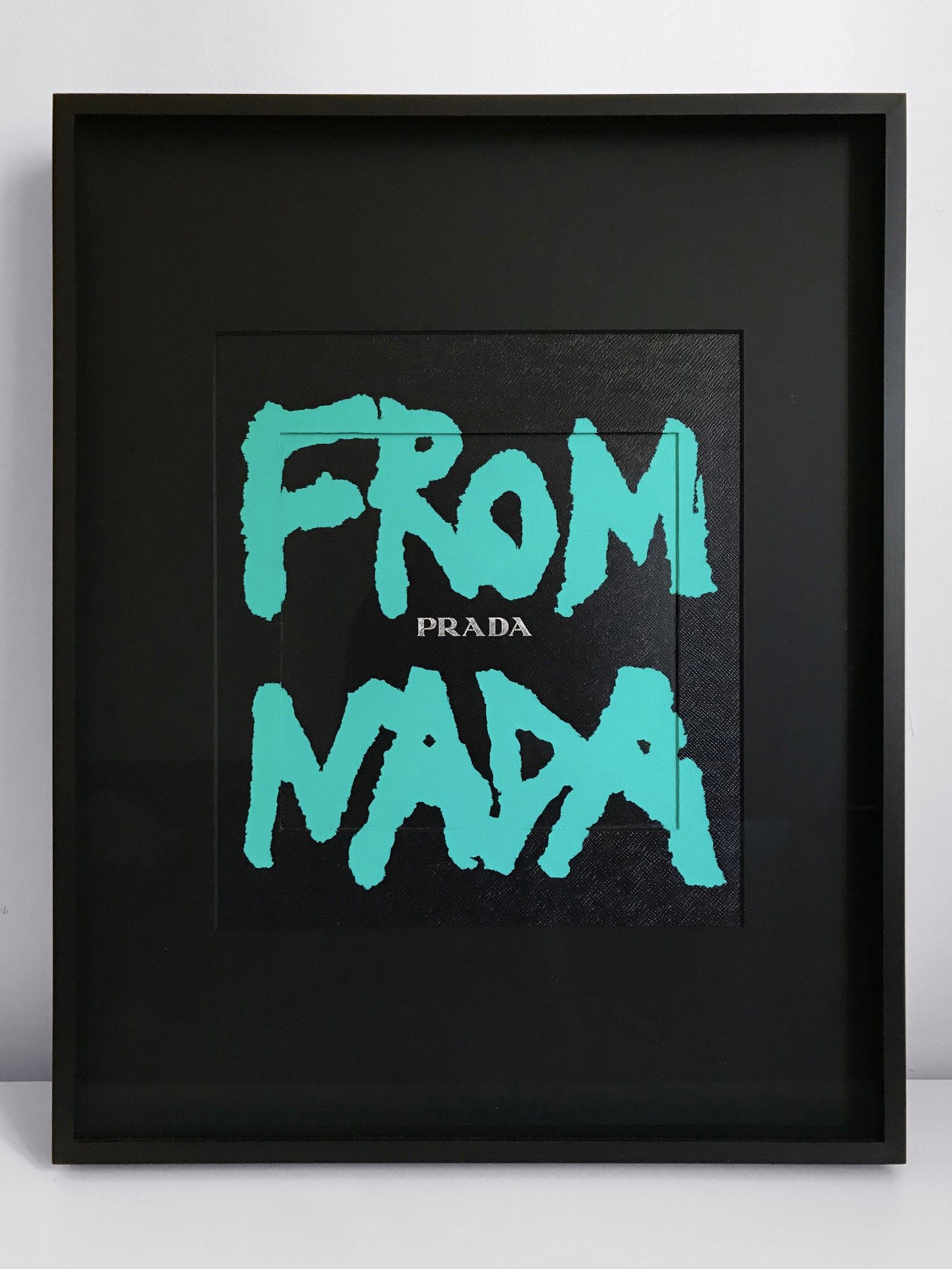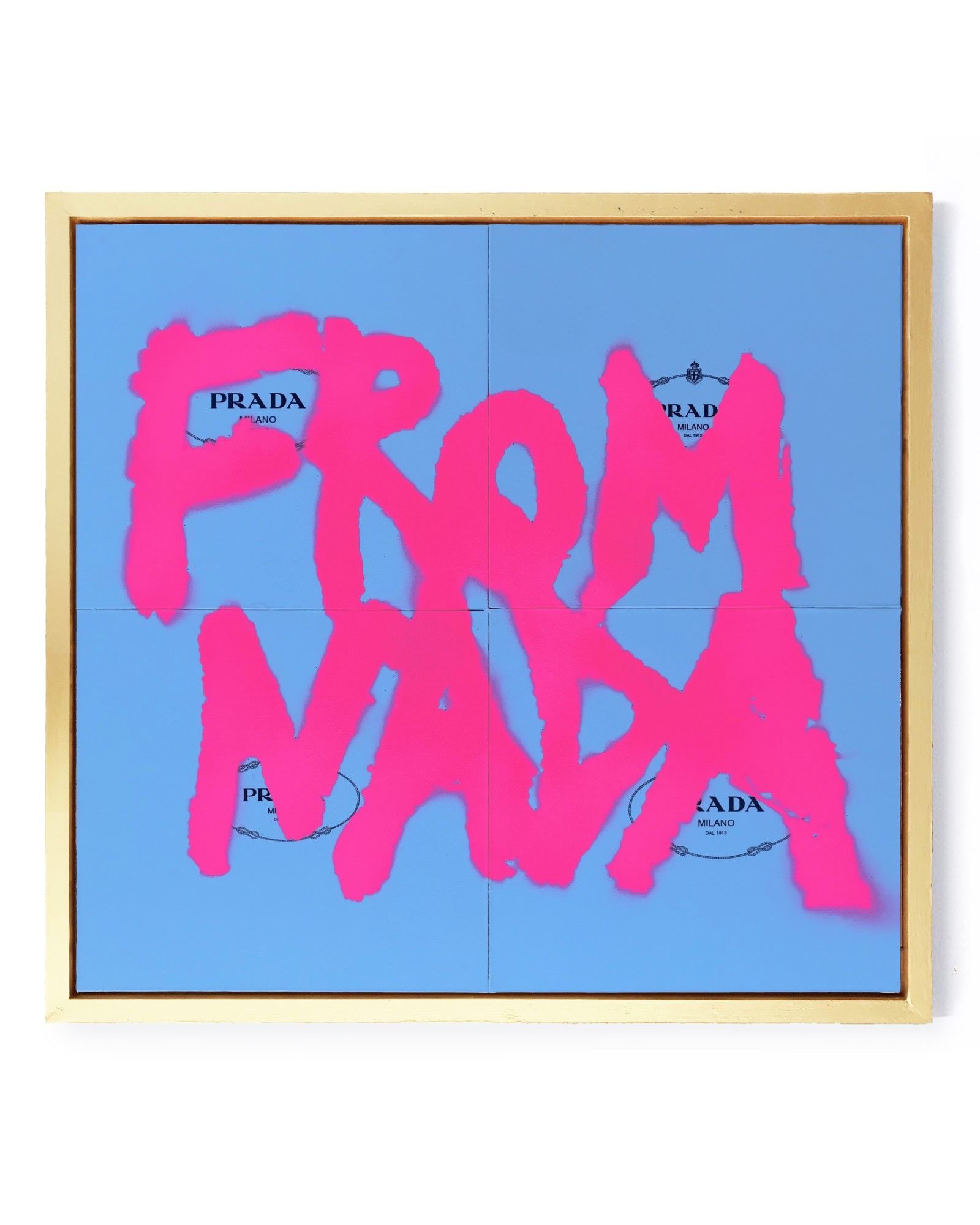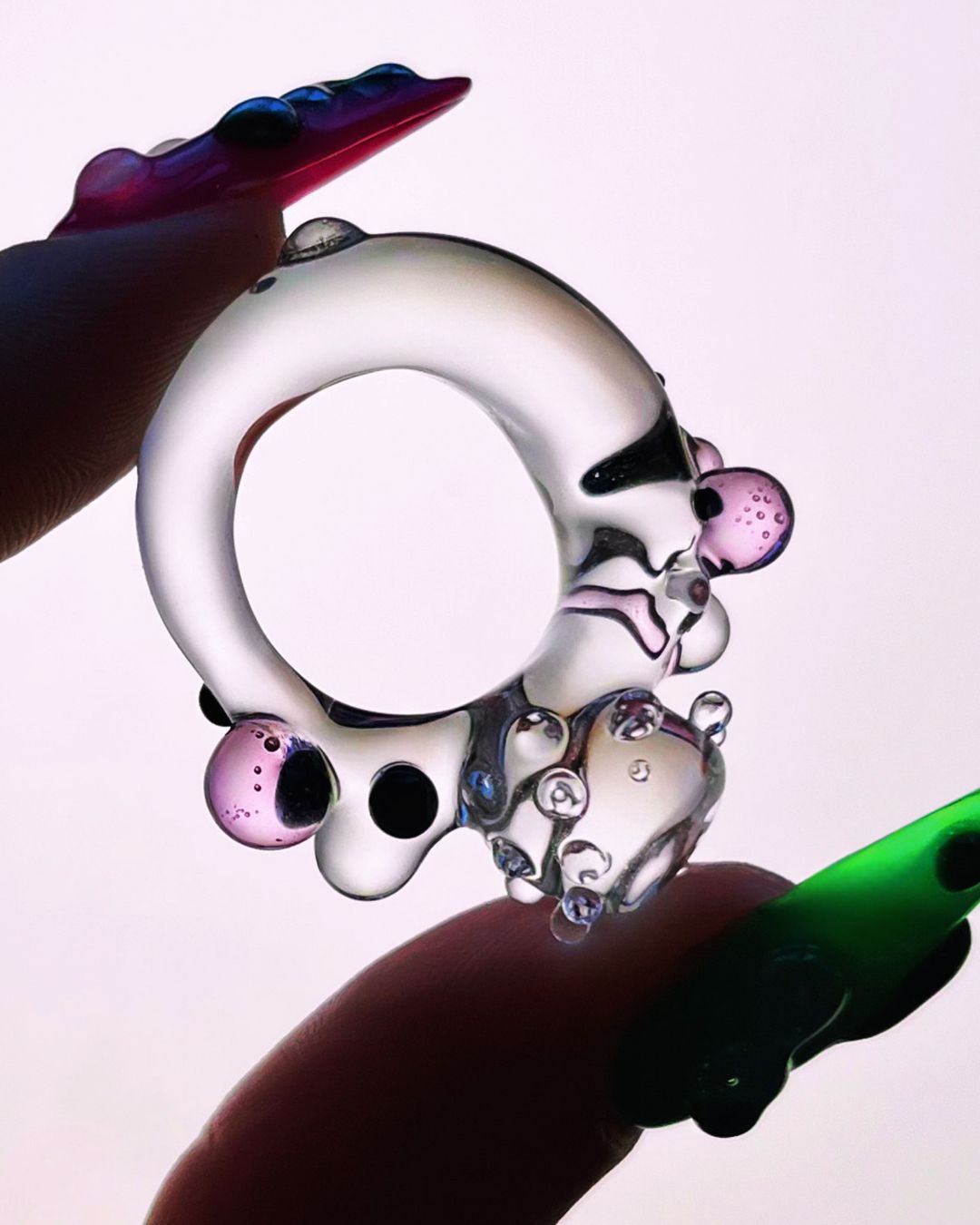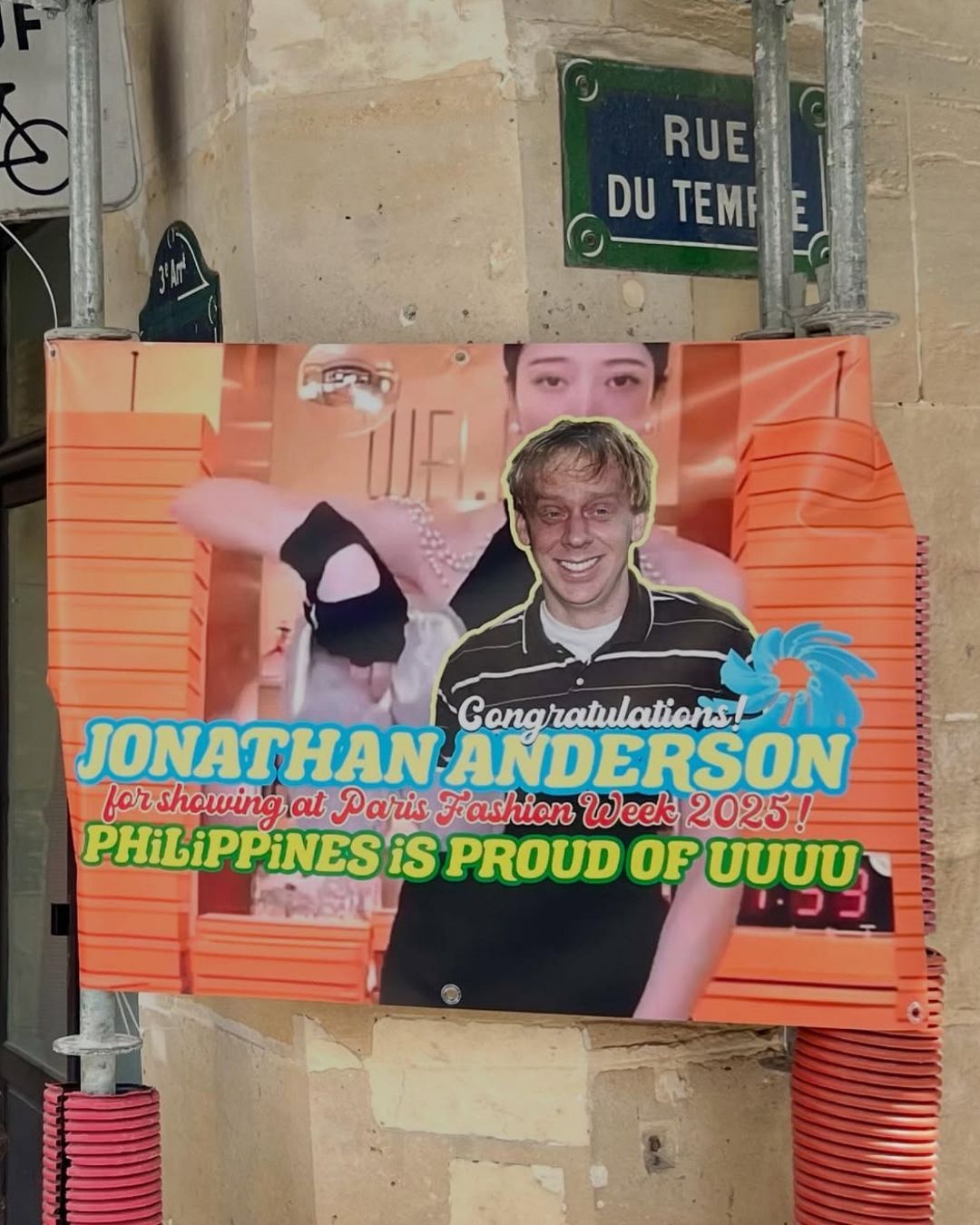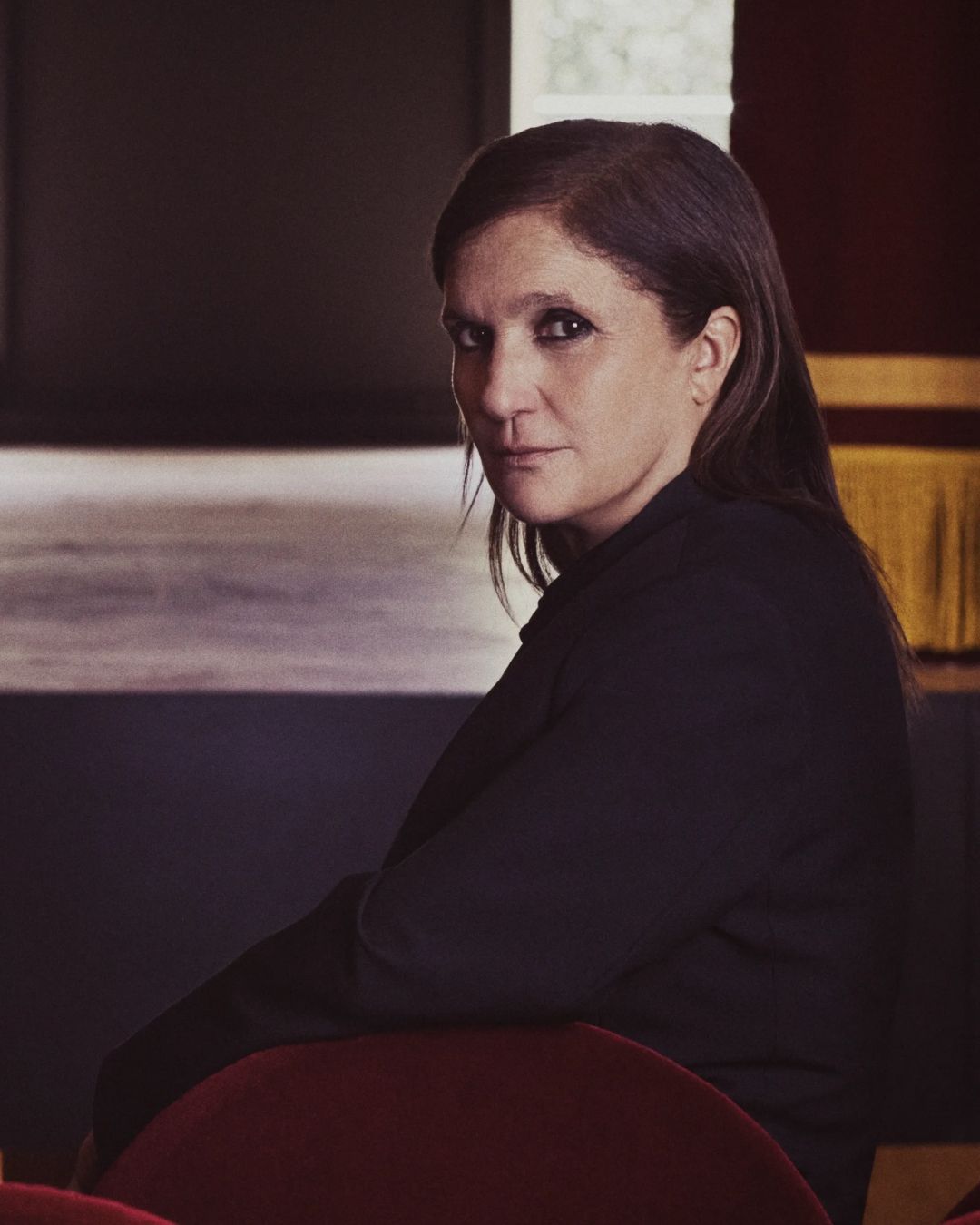
Fashion, memes and everything else: interview with Pietro Terzini The visual artist told us about creativity, the digital world and how bars are the last bastion of culture
Simplicity and irony are the two main characteristics of Pietro Terzini's art. His slogans written as graffiti on the packaging and logos of the most famous fashion brands, all published on his page @friday.fries, are spread everywhere on Instagram – especially a photomontage that has as its protagonist the boutique of Hermès in Via della Spiga that currently owns 40,600 likes only on its original page and who knows how many reposts.
But Pietro's art extends over multiple formats, supports and genres: whether they are fake screens of poetic DMs, graffiti (both real and photoshopped) of metaironic aphorisms printed on palaces and billboards, photomontages of paintings or famous scenes of cinema, but also sneakers or real paintings of which his Milanese studio is full – everything is inspirational material for Pietro , so the metaphorical blank canvas on which to paint is our pop culture.
For its ability to be cross-sectoral winking at the meme's world, in a more natural and instinctive way than a cumbersomely intellectual one, and above all for its way of questioning our society with a smile, talking about the paradoxes of consumerism and love in the age of social networks, Pietro's art seems a perfect counterpoint to modern and pre-fabricated pop culture of marketing strategies and command press releases. And it is to make us tell better about his artistic path, his career and his points of view on creativity in the digital times, that we interviewed Pietro Terzini.
Your style as an artist is seemingly simple but very smart in its use of references and ironic spins. How did it develop? Was it the result of an enlightment or were there intermediate stages?
It makes me smile to talk about my style! I wish I had too much of a sudden epiphany! Actually what I'm producing now is a phase of a "doing" process that started a lifetime. Like everyone else, I've always had an expressive urgency. As a kid, I was on a fixer with Michael Jordan, I think I drew the Chicago Bulls logo a million times! In middle school I played basketball and at the bottom of the bus I listened to Lose Yourself and In Da Club. Then in high school when I saw Fabolous's video Breathe I discovered Evisu and BAPE. I think It was 2004, with streetwear it was love at first sight, I never abandoned it again. At the age of 14, with little success, I produced hip hop music bases and saw the birth of the Italian scene, while Kanye West began his worldwide rise and collaborated with Kaws and Takashi Murakami. In those years I was literally a sponge and I absorbed everything to the last drop; my cultural background starts from there, then I studied architecture.
At Politecnico my street and African American influences suffered an unlikely contamination with the minimalism of the 20s and abstract art. In this cultural crush Mark Rothko exalted me as much as Niggas in Paris and Mies Van Der Rhoe and Alvaro Siza to me were mythological figures as Pharrell and Timbaland. There I started painting. First abstract paintings, then graffiti. It was all very confusing and random, but creating something of my own helped me through a phase of life where I saw the future blurry and uncertain. I have never been an architect and in 2016 the fairy wanted me to enter one of the most innovative New Media Agencies in the world in the fashion field. In the creation of my imagination this was a fundamental step. There I discovered Instagram and the power of sharing. For years I have experimented in digital art on my Page Friday.Fries looking for my own language without ever finding it but guessing the importance of 2 ingredients that I consider key: synthesis and simplicity.
I think simplicity is the ultimate sophistication of our time and sometimes the most difficult result to achieve. All my work consists of incessant labor limae to take away the superfluous and get to the essence of things, and I rarely succeed! My latest works are generated precisely by my search for synthesis and simplicity. Synthesis is cognitive and derives from the association of seemingly irreconcilable worlds that find a meeting point in the work through a process of opposition or provocation. Simplicity is in elementary execution technique. The result is a contemporary remix of the baggage of cultural references That I have collected since I was a child with physical outputs to share in a digital environment like that of Instagram.
Much of your production has fashion iconography at its heart. Of all the areas of pop culture, do you think fashion lacks self-irony?
If fashion were self-deed, what I do wouldn't have the same scope. Imagine the most self-denocating people you know, I bet they're also the smartest and most confident people you've ever met. The same goes for brands. Of course there are self-de-ironic brands, Moschino comes to mind, however the overall strategy of luxury brands seems to me to have been to embrace mission and more generic causes in a commercial key, without ever really making fun of it. It would be fun for someone to clear this issue!
Memes are probably the cultural phenomenon of the decade. Have they played a role in defining your production as a visual artist? Do you think it's fair to consider memes an art form?
Memes for me are without a shadow of a doubt an art form, among other things among the most conceptual and intelligent. What I like most about memes is immediacy and simplicity, which as I said is really the last sophistication of communication. I am convinced that in 50 years' time we will be talking about the phenomenon of memes not only in the artistic field but also in the literary field as a form of new hermeticism of the first decades of the twenty-first century.
What do you think about the NFT phenomenon and how digital art was catapulted from Instagram into the market?
The NFT market is definitely bubble in the Far West but at the same time there is no turning back! Christie's auction consecrated it and for the first time digital artists can finally be considered artists in all respects. In the coming years the NFT system will certainly have an impact on the traditional concept of gallery, show and art collection. I am curious to see what will be considered art in the coming years and where the boundaries of digital art will go. We'll see!
What are the most creative places on the Internet today in your opinion?
The most creative places in the world are bars. When you did something wrong in elementary school and the teacher said , "We're not at the bar", she would transform the bar into a magical place where you could do what you wanted. The most brilliant people I know, I met them at night in clubs and bars, and that's where the best ideas came up. In my case, the best creativity arises from the frank exchange of ideas between people, even unknown, in an informal environment completely devoid of social and cultural superstructures: only ideas count. Then there are the books. I've always bought a lot of them, especially monographs. Books are a bottomless well of inspiration and inspiration. Then there's love! How much inspiration do you do in the hope that she will see it? And then, in fourth place, there's the internet. Instagram is definitely a source of inspiration as well as Tik Tok, however over the years these platforms have reached a really embarrassing level of content approval. Creatively if you're looking for something really fresh and innovative you'll rarely find it on the internet, rather it will be a stranger who will show you from the gallery of his iPhone outside a bar.
Your Hermès post that went viral looked like a site-specific installation but it was all digital. A demonstration of how art can actually be either become everything, or be applied to everything – you also decorate your shoes with your artwork. Do you think the art of our times will move in this direction in the future? And that is that it will increasingly become a "signature" or "author's patina" to be declined in different languages and on different media, physical and not, just like the logos on which you make irony?
In fact, mainstream art is already this today. Think Kaws, Takashi Murakami or Damien Hirst. The most pop graphics that are behind them are so strong that they can customize anything, just like a brand logo. I think that the creative processes of the coming years could increasingly take inspiration from the old, but always current, processes of regionalist architecture that has placed the theme of context at the center of the discourse. The analysis of the geographical and temporal context, both from a global and local point of view, reveals hidden relationships and can thus inspire ideas not only fresh and original, but also relevant, without falling into the trap of self-incitement and mannerism. The principle that guided the realization of Hermès' post was just that.










































